A few weeks ago, we took a journey to the country of Scotland. As I probably don’t need to mention, it’s also part of Great Britain, along with England, Wales and Northern Ireland.
We traveled back to the British Isles with our very good friends Jen and Andy. They have fast become some of our favorite traveling companions. It was a great trip to an amazing, beautiful land with some of the nicest people we’ve met. Anywhere.
After flying into Glasgow, we spent our first day on the bonnie, bonnie banks o’ Loch Lomond (or so the famous Scottish song goes).
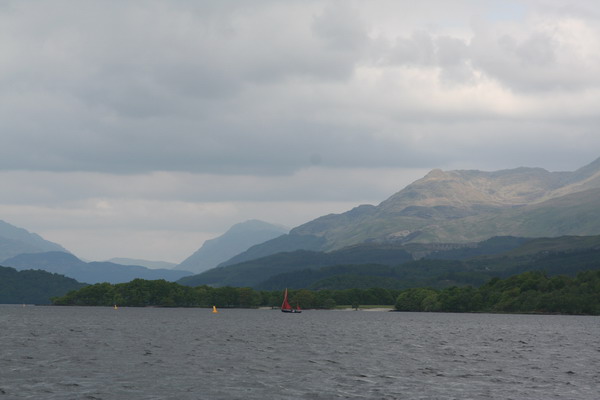
Here we all are on the mail boat that toured us around the lake for a few hours.
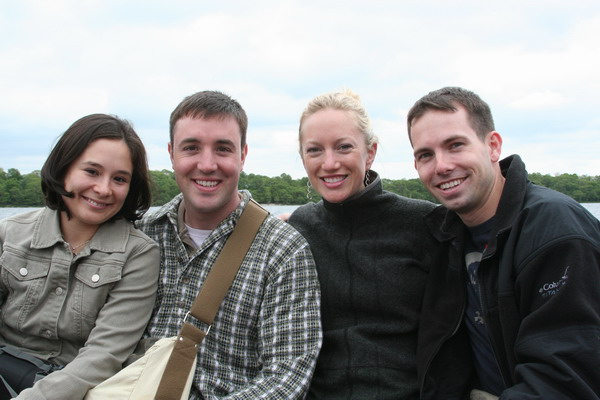
A better view of our cruiser.
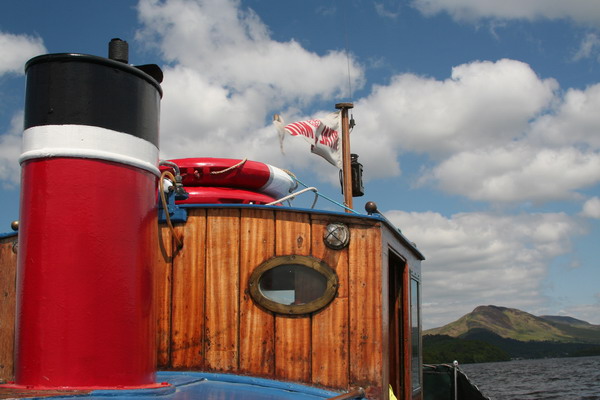
As you might imagine, we also felt the need to hike around the loch. So, we headed off to explore the trail next to the water.
Doesn’t Anna’s hair look nice?? J
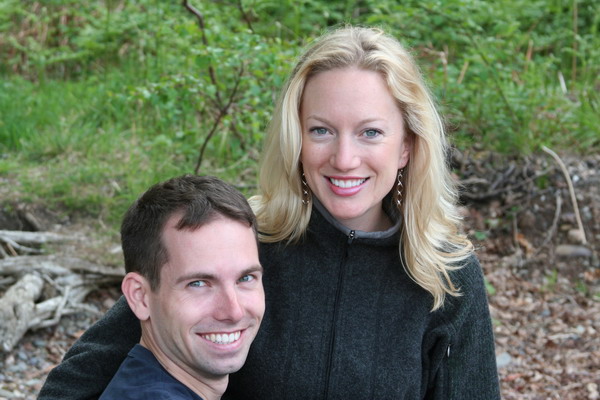
The emerald forest was majestic.
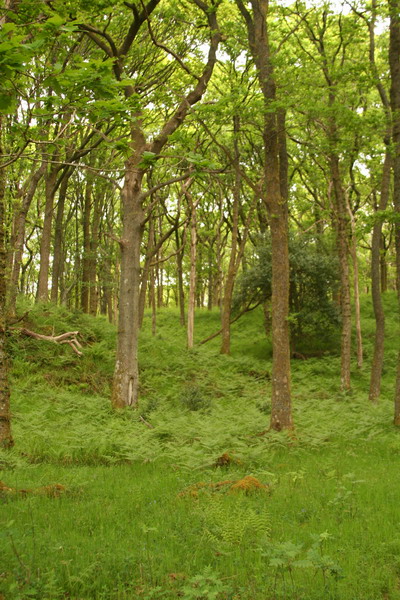
Jen was a very graceful tree-climber… Can’t you tell?
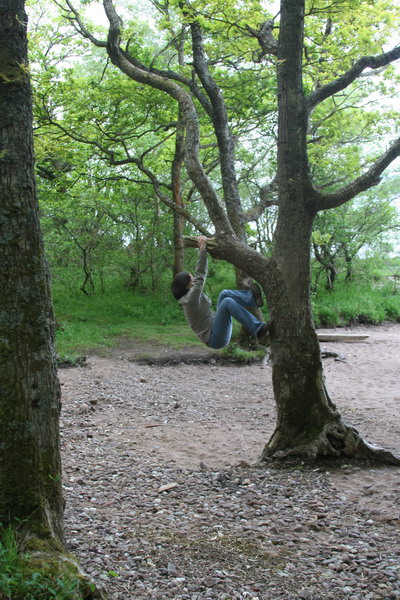
If you’ve spent any time around me and Jen (much to the frustration of Anna and Andy), you’ll know that we tend to be competitive. So, we had a little competition on who could climb higher.
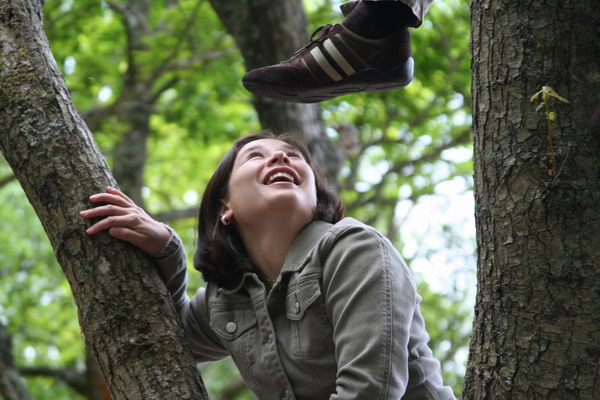
After our adventure on/around Loch Lomond, we drove across the island to the Scottish capital city of Edinburgh (pronounced something like Edden-burra). In the fifteenth century, it replaced Scone as the seat of government (you’ll see Scone a little later). Now, Edinburgh is the second largest city in Scotland, after Glasgow. Since none of us are economists, the fact that Adam Smith was born in this city made no difference to us. Still, he is just one of many famous people from Edinburgh. The others that you may care more about are Sir Sean Connery, Sir Arthur Conan Doyle (think: elementary my dear Watson…), J.K. Rowling, and former Prime Minister Tony Blair.
There is a formidable rock outcropping that provided a natural defense and naturally led early inhabitants to build a castle on it. Now, Edinburgh Castle forms the end of a very scenic road, known as the Royal Mile. We had fun exploring it. Interestingly, the rock where the castle is built is very hard and survived the onslaught of the last ice age. The area to the east was softer rock, but was sheltered from the ice and now forms a mile long tail to the hard crag. Thus, we have the geologic basis for the Royal Mile.

Next, we wandered down the tail and turned around to admire the architecture.
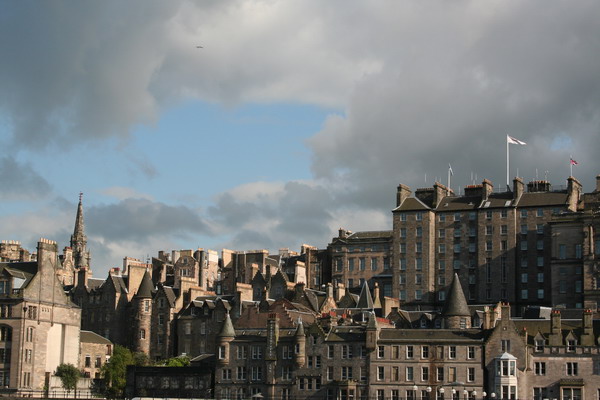
Ahead of us was the Princes Street garden.
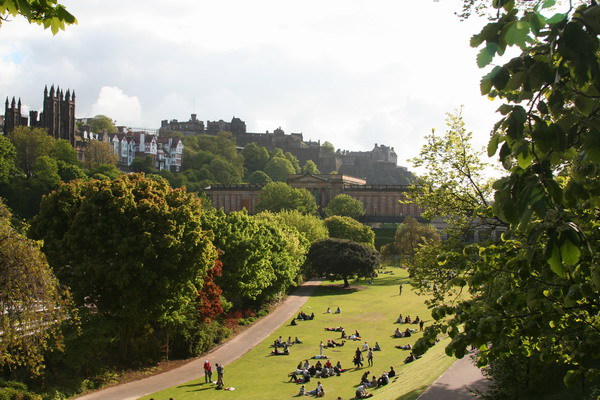
Anna and Jen were all about hanging out and enjoying the day. Andy and I readily agreed to enjoy the grass.
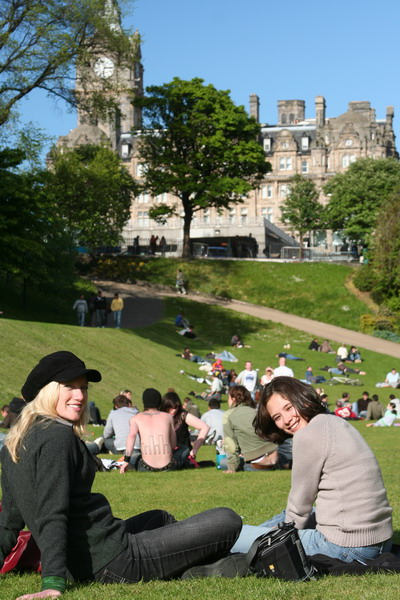
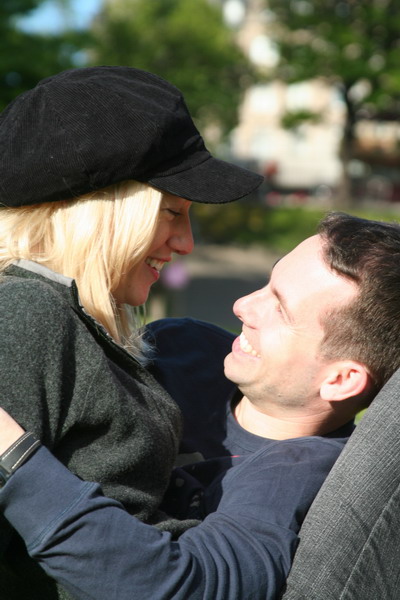
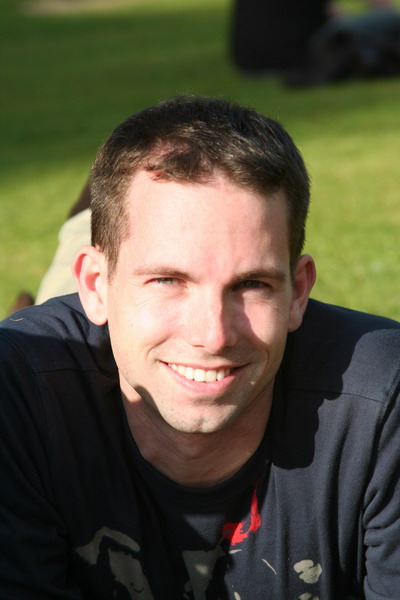
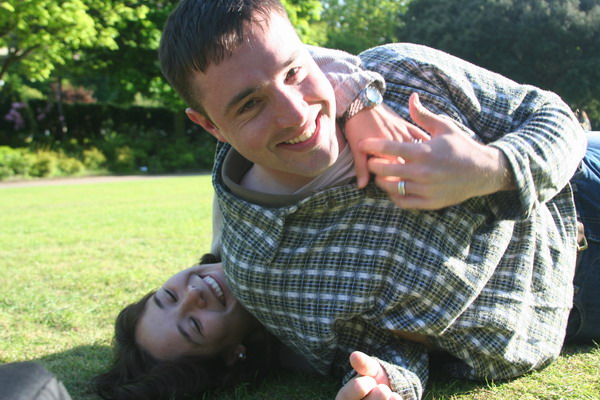
This is a view back to Edinburgh Castle.
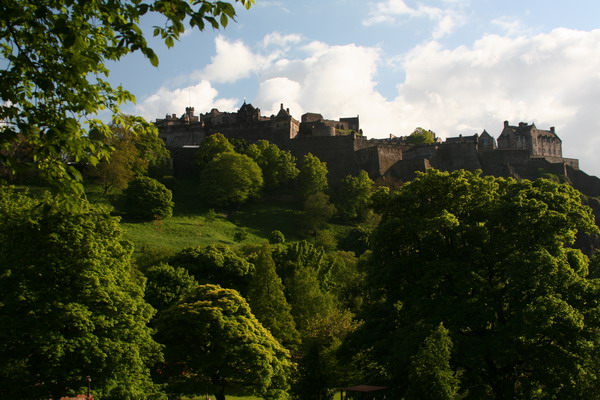
That night we took a tour of the underground city. Although tales abound of ghosts wandering, we didn’t see anything more eerie than a tour guide wearing all black and trying really hard to scare her guests.
The next day we got up and drove northwest to the historic home of golf: St. Andrews Royal and Ancient Golf Club. Although the Old Course of St Andrews is officially public, the greens fee is nearly $300. Plus, since there is so much demand, tee times are assigned by a lottery system. So, with that information in mind, I decided to forego a golf at the oldest golf course in the world. That didn’t stop us from paying a visit to the home of the 2010 Open Championship (AKA the British Open).
This is the 18th green of the Old Course and where the Open Championship was first played in 1873. It has since been held here 26 more times, most recently in 2005. When the Open Championship returns in 2010 though, it will be played on the Castle Course which is set to open later this month.
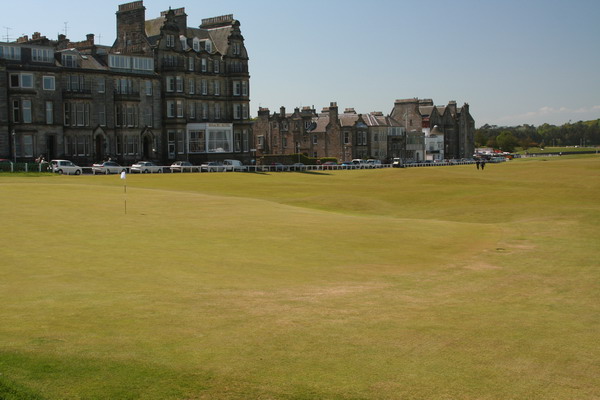
A few lucky players finishing their round on the Old Course.
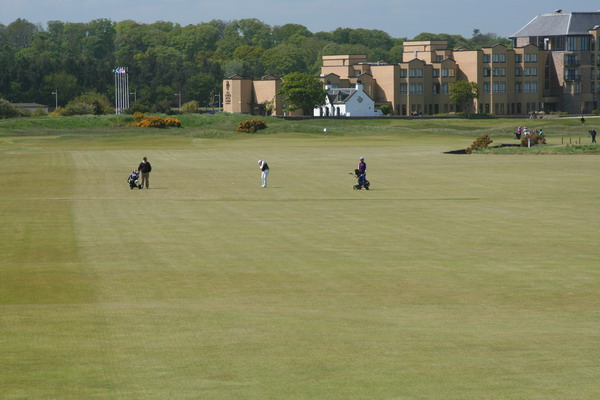
What I didn’t realize before we arrived is that St. Andrews actually has 6 different courses (7 when the Castle Course opens). Plus, the Old Course originally had 22 holes, 11 out and 11 back. In 1764, the Royal and Ancient Golf Club decided that some holes were too short and combined them to make what has become the standard, an 18-hole course.
For the golfers out there, the game was played a little differently in the 18th century. For example, when a golfer completed a hole, he had to use a scoop of sand to tee his ball up within 2 club lengths of the hole.
This is the Jubilee course, which is right next to the ocean. Its greens fee is a much more reasonable $140.
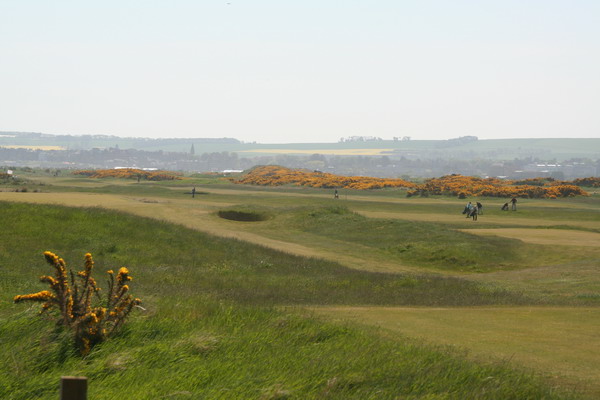
The windswept beaches were also fun to play in. Here is Jen, ready to capture the action.
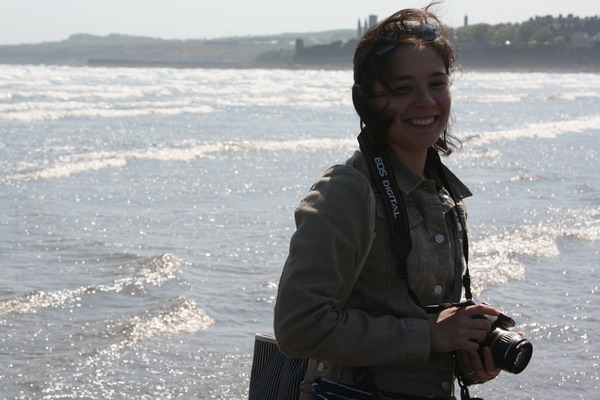
The happy, but wind strewn group on the beach.
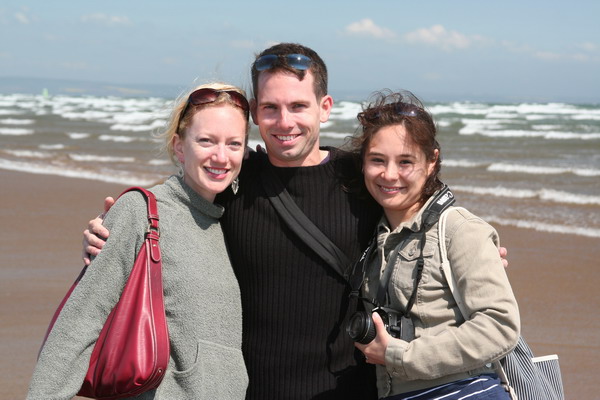
Next on the itinerary is the historic home of the Stone of Scone. Although it’s currently at Edinburgh Castle, it used to be housed here, at the Scone Castle. Many Scottish kings were crowned here: from Robert the Bruce (think: Braveheart … even if it’s not historically accurate) to James VI who in 1603 became James I when he inherited the English throne from Queen Elizabeth, the last of the Tudor Dynasty. Scotland wasn’t officially a part of the United Kingdom until 1707 with the twin Acts of Union by the Scottish and English parliaments, which formally united the two countries.
This is Scone Castle, where the Earl of Scone still lives.
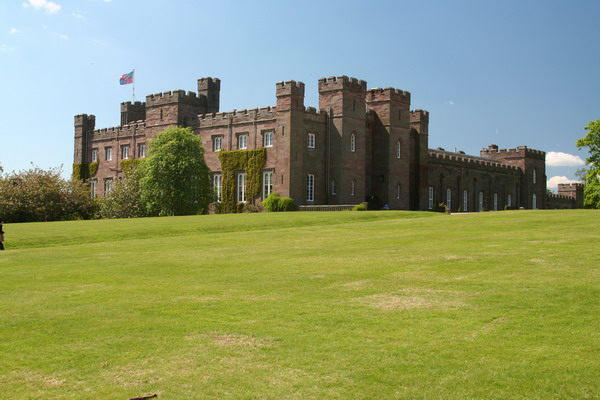
It was easy to imagine riding a carriage through the gate to attend a coronation ceremony. Well, ok, not that easy, but it was still picturesque.
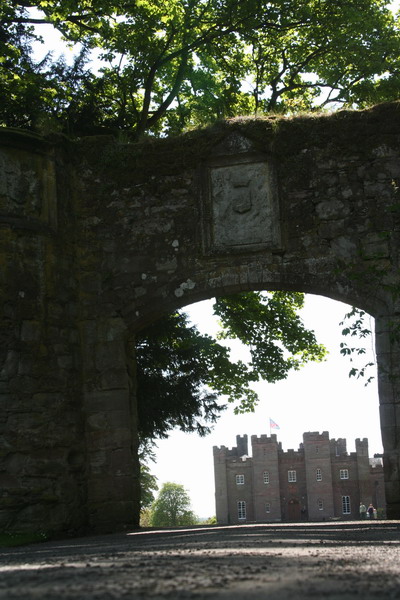
Maze gardens are always fun. Not surprisingly, we had a race to see who could reach the center first. I won’t mention who won.
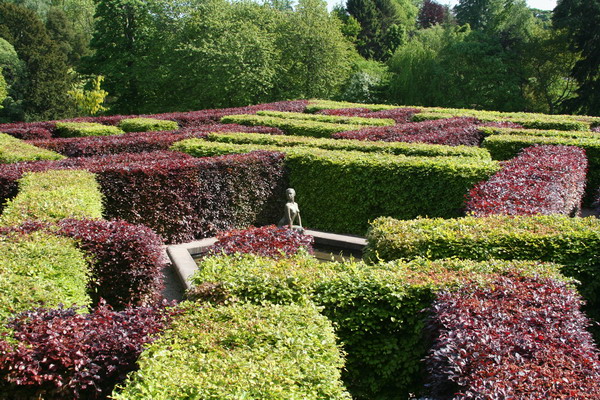
After searching in vain for scones to eat (the food and castle have no connection, in case you were wondering), we headed further north to the Scottish Highlands. Although we didn’t stay in this castle, we did stay in a very romantic bed and breakfast just up the road. We were the only guests and thoroughly enjoy our host, Dot, who treated us like royalty (she learned that skill while working for royalty in London).
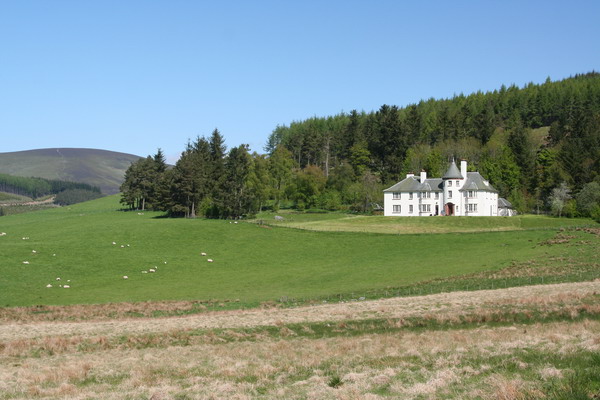
We finished our trip the same way we began, with a hike. This one was a little more rigorous, but still very enjoyable.
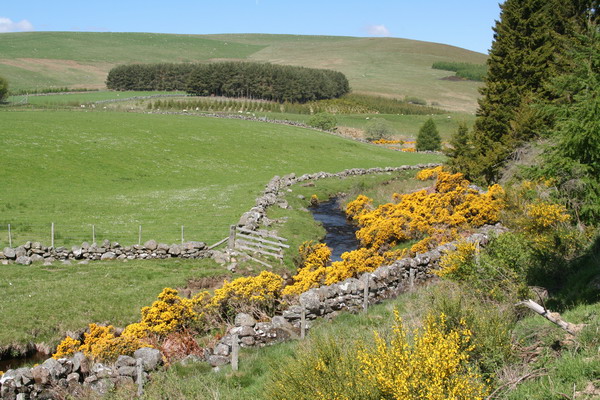
Although there is very strong evidence disproving the existence of the Loch Ness monster, we were convinced that Nessy might have been lurking in this shallow loch.
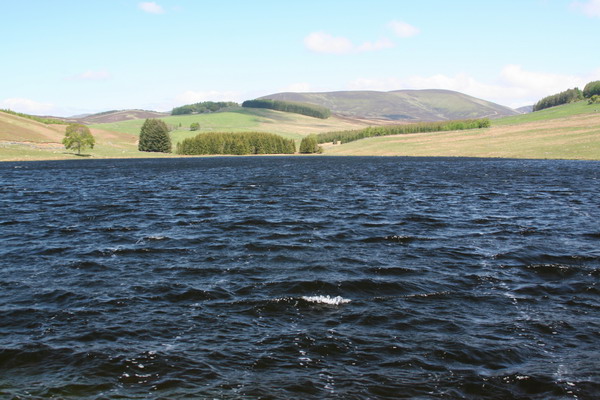
After the hike, we drove back to Glasgow to enjoy a final Scottish dinner, and then boarded the plane to return to Germany. It was another great trip with our dear friends Jen and Andy. We concluded that the stunning landscape, friendly people and great culture make this one of our top 10 favorite countries. We look forward to coming back sometime soon.
Until our next adventure…
–Jim
Paris Marathon 2008
So, although I have done a number of endurance events, I had yet to complete a full marathon. So, this year I decided it was time and since Paris is only a few hours away, it was destination: Paris Marathon 2008.
The plan was to race with Anna, me and our good friend Jen (unfortunately, her husband was in southwest Asia and unable to join us). Also unfortunately, Anna had a complication part way through her training and couldn’t join in on race day. But, luckily for Jen and me, she was willing to photo-document the event.
This was the 32nd running of the Paris Marathon and it was huge. There were about 30,000 runners and 200,000 spectators. It was the biggest event I’ve been a part of. We were running in a crowd the WHOLE race. That made the torture of 26.2 miles (or 42.2 kilometers) pass rather quickly.
As you can see, we lined in front of the Arc de Triomphe in the Place de l’Étoile. We queued according to expected finishing time. My goal was 3:30 and Jen’s was 4:30. For reference, the elite (read: professional) runners finish in just over 2 hours.
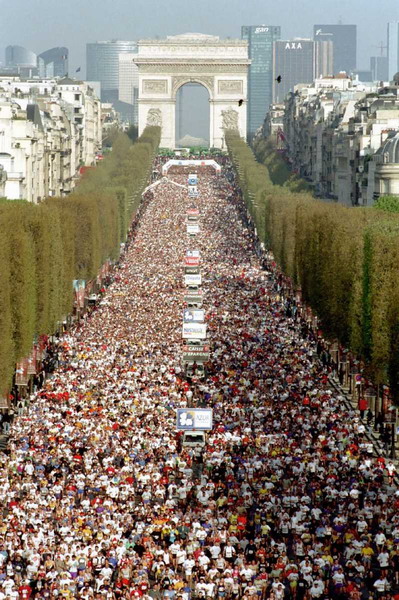
Jen and I looking a little nervous before the start.
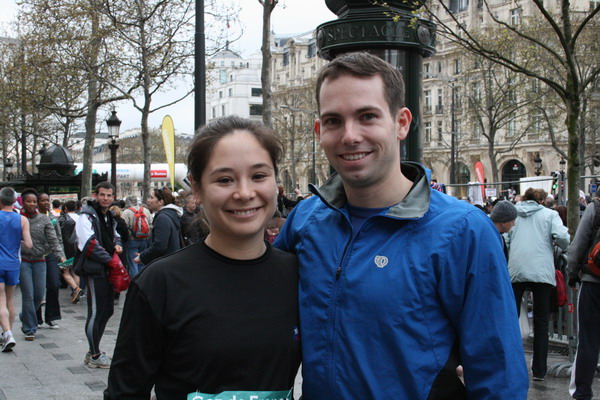
As you look across the sea of people, you can see Jen in the lower center of the image.
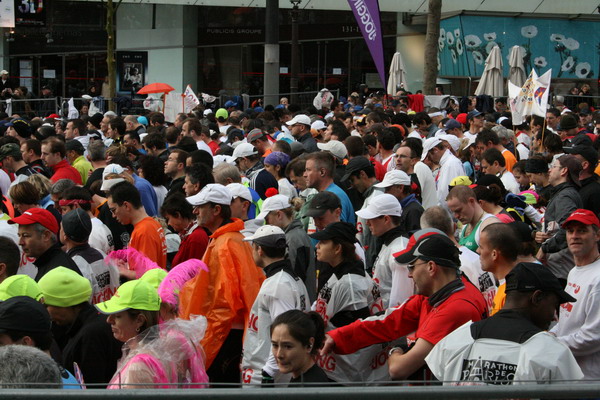
It was a little chilly waiting around for the starter’s pistol. So, race organizers solved that problem by giving each competitor a plastic bag to retain heat and stay warm. Unfortunately, that meant that there was a HUGE mess to clean up.
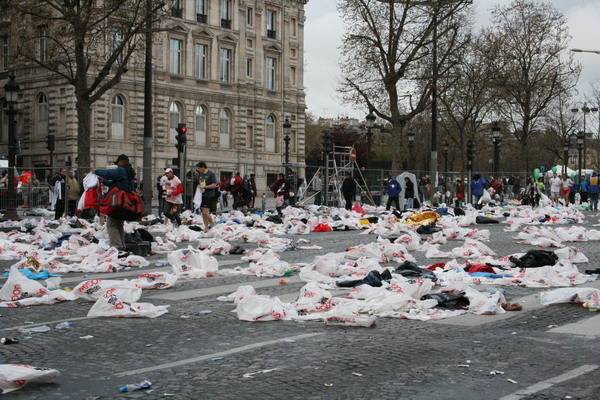
Some groups and individuals really dressed up for the race. From about mile 8 to mile 10, I was running next to Superman.
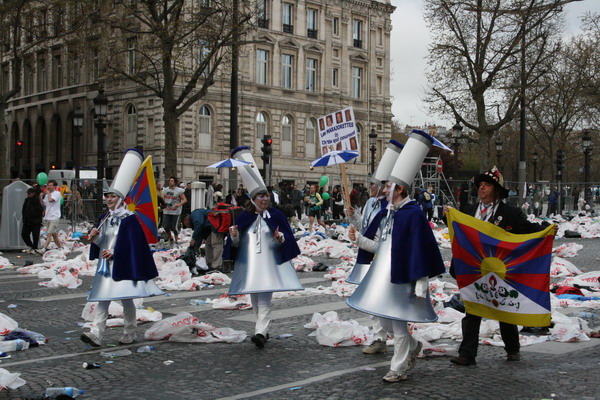
Jen ran next to this guy for quite a while. He had quite a stride!
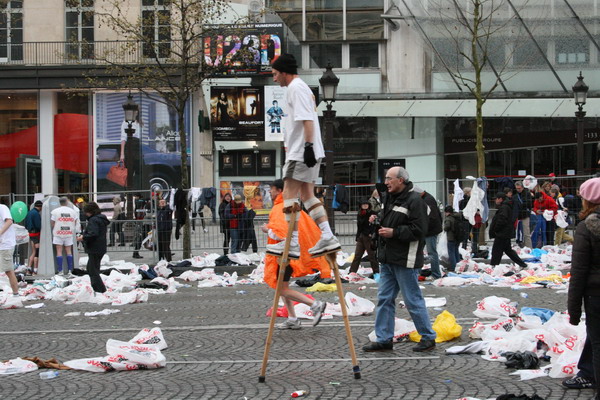
A whole legion was waiting to clean up…
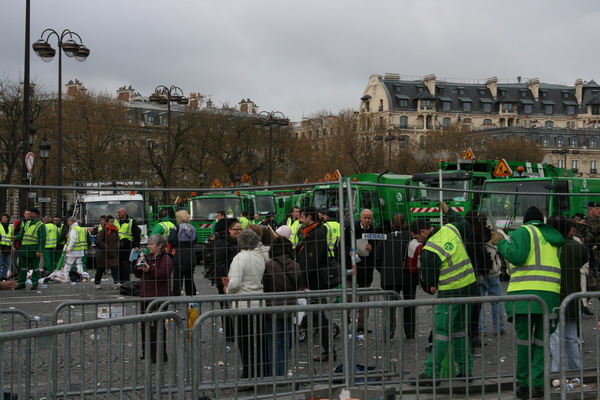
And there was a lot to clean up.
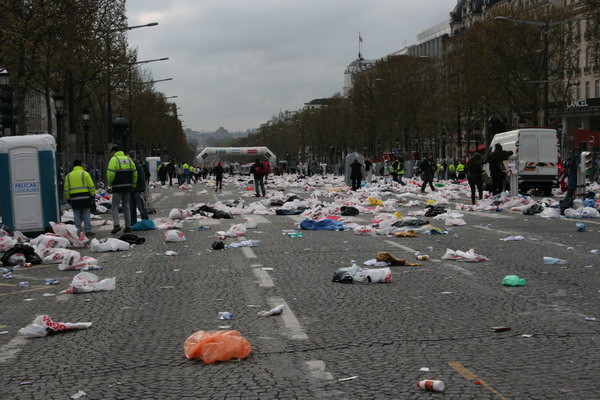
Of all the photography stations along the way, this is the only one that got an image of me…
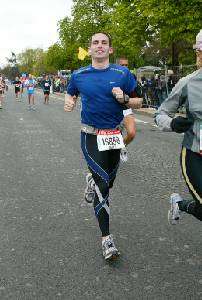
Hail the conquering heroes!
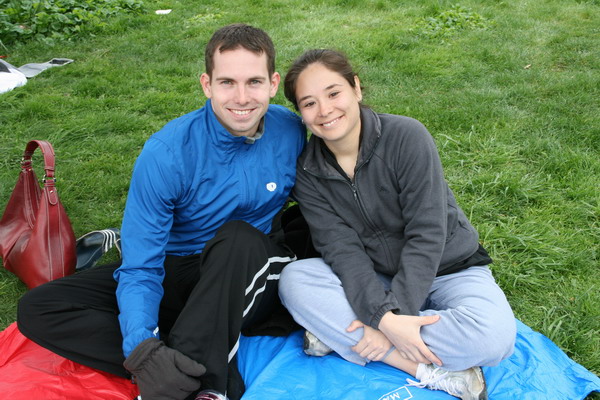
We made it all 42.2 kilometers (or 26.2 miles). Actually, because I was in a crowd the whole time, I ended up running a bit farther (almost 27 miles on the GPS). Jen and I were almost exactly on our goal times. I finished at around 3:40 officially (3:36 unofficially) and Jen “ran her little heart out” for a 4:32.
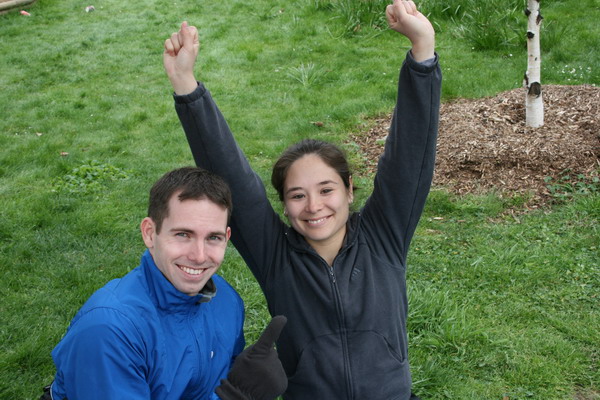
Some interesting facts about running a marathon. Of course, it’s an homage to a Greek messenger who, according to legend, ran from the port town of Marathon to Athens, warned the senate of impending invasion, and died on the spot. Fortunately, as far as I know, no one died in this race, but it was certainly a grueling race. In fact, most endurance runners hit a ‘wall’ of sorts at around mile 20 in a marathon. Since I had already hit that in my training and other races, I knew what to expect, but it was still a bit frustrating. I wanted my legs to work faster than they were.
As a bit of biological background, the carbohydrates a person eats are converted into glycogen by the liver and muscles for energy (or calorie) storage. Glycogen burns quickly to provide energy. Runners can store about 2,000 calories of glycogen in their bodies, enough for about 30 km (or 18-20 miles) of running. Not surprisingly, this is also the point where most people hit the wall. When glycogen runs low, the body must then burn stored fat for energy, which does not burn as readily. This is the point when physiologically runners experience dramatic fatigue, or ‘hit the wall’. Jen described it vividly as “a bad dream … like a monster chasing you and for some reason your legs aren’t running fast enough and you can’t will them any faster.”
Although we both hit the wall pretty hard, we were close to our goals and pleased with the result. We weren’t number 1 (Tsegaye Kebide from Ethiopia who ran it in 2:06:40 was the actual winner), we certainly felt like champions.
Since we’ve had some time to reflect on it, we’re already plotting out the best race for all four of us to compete in. So, stay tuned to the results from the next marathon.
Both before and after the race we took some time to see more sights of the city. Here is Jen looking particularly French.
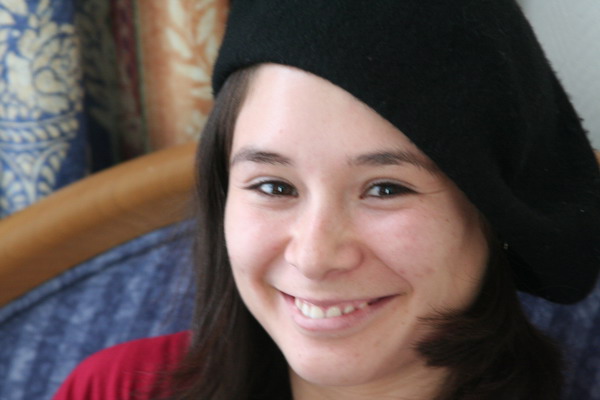
Jen caught me taking a picture of Anna…
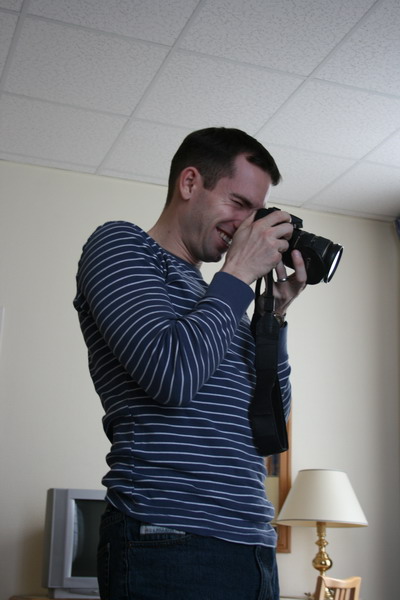
Near our hotel was the very pleasant Luxembourg Garden.
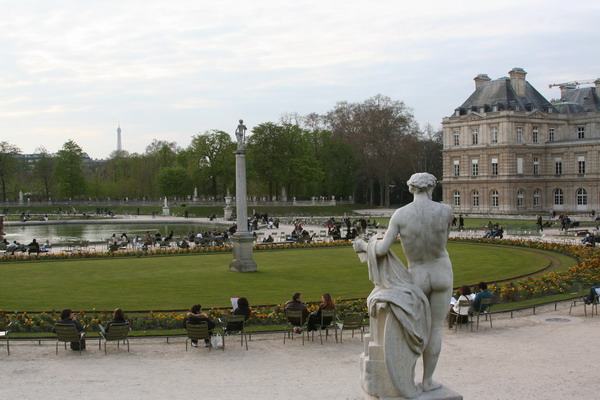
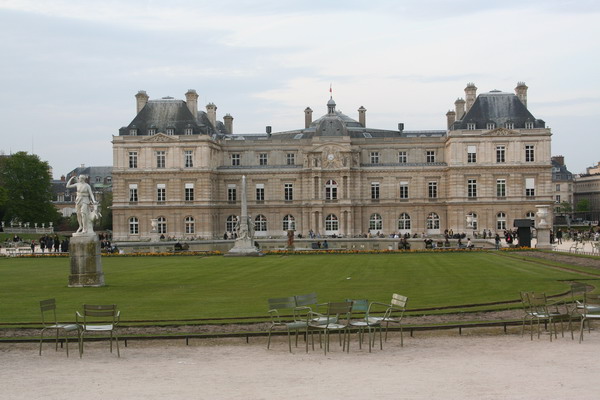
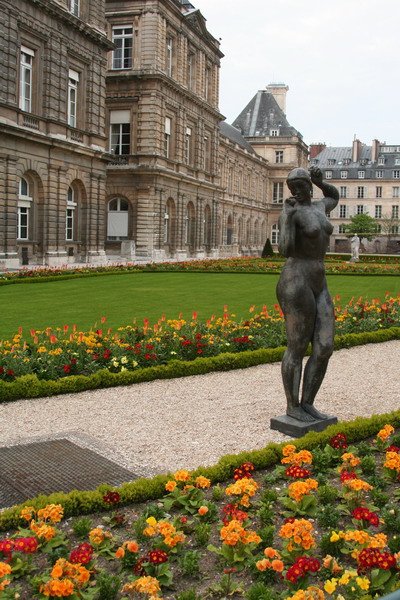
I love all the random works of art throughout the city. Here you can also see the Panthéon with its panoply of French patriots buried inside.
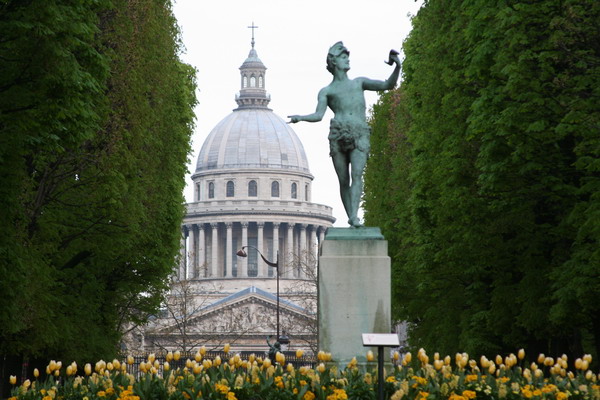
We also visited the light filled Sainte-Chapelle on the island of the city (near Notre Dame). It is a glorious Gothic chapel built by Louis IX (the name sake of St Louis in Missouri) between 1242-1248. Gothic architects loved to use light and this is perhaps the highest realization of that ideal. Also, there are 1,100 Biblical scenes represented on the stained glass (amazingly, two-thirds of it is original).
Suffice it to say, this place is amazing inside and out.
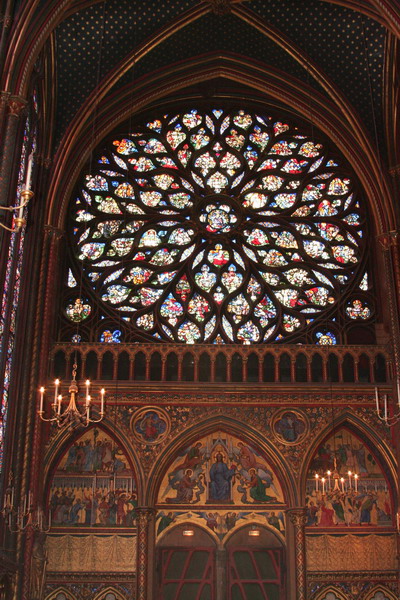
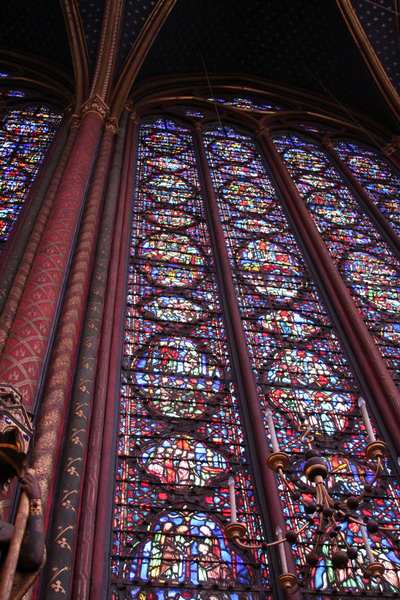
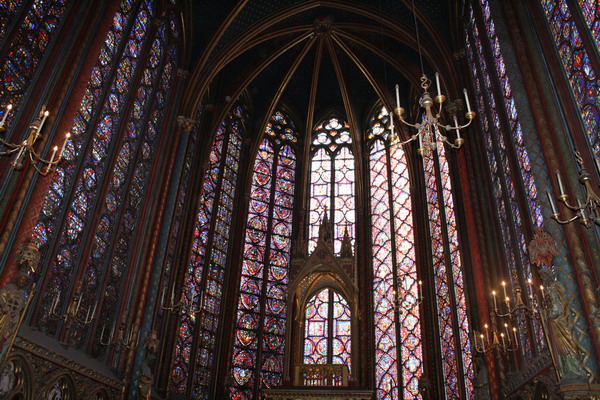
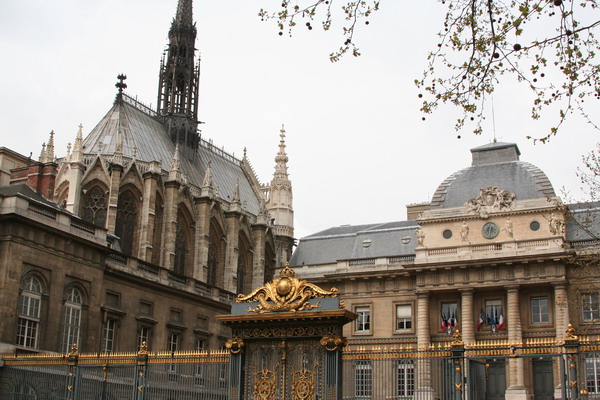
Here are the girls looking cute, but perhaps a little cold.
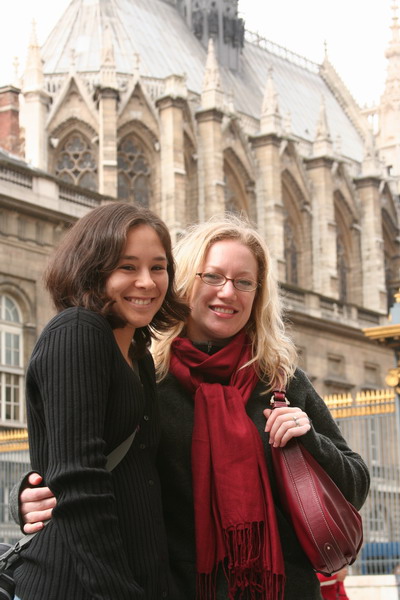
I love the motto of the French Republic: Liberty, Equality, Brotherhood.
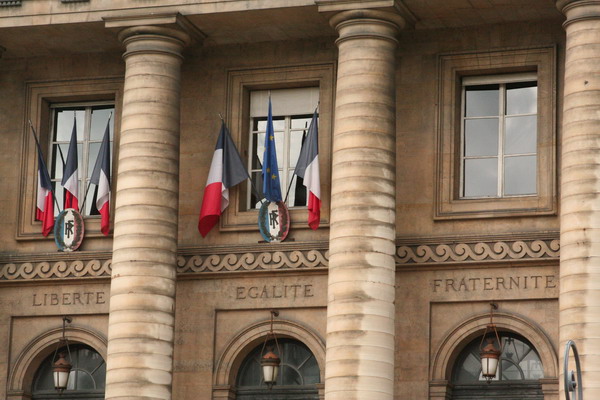
We also visited the reverse designed Pompidou Center for Modern Art. It is filled with fascinating art from perhaps the most fascinating and tumultuous century in the current era, the 20th. I think it’s still waiting for the world to catch up with it.
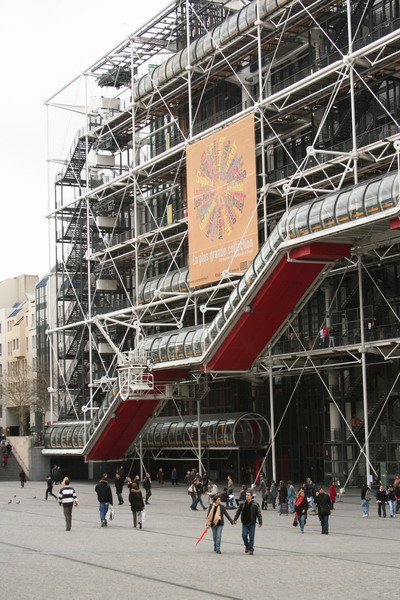
Finally, what visit to a major city would be complete without a picture of its subway system. I love European mass transportation.
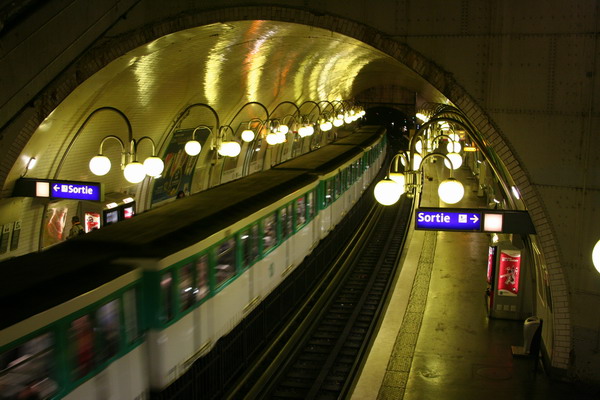
So, until the next adventure…
–Jim
Champagne, France
Back at the end of March, we took a trip to one of the smallest, most famous wine producing regions in France: Champagne. The capital of the region, Reims (unusually pronounced Raance) is also the largest city and where we began our tour. However, the first sight we saw was not the famous champagne houses, nor vineyards. Instead we toured the cathedral where French monarchs were once crowned (27 to be exact). Rebuilt in the thirteenth century, after a devastating fire, Notre Dame de Reims is the focal point of the city to which a confident Joan of Arc led Louis VII to his coronation in 1429.
Here is how the beautiful west portal looks today.
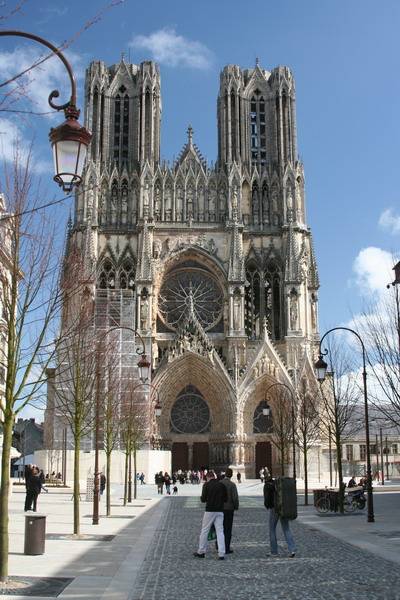
Inside, you are able to see the rose windows. Although the majority of the church was destroyed by vicious fighting in WWI, this is (partly at least), original glass.
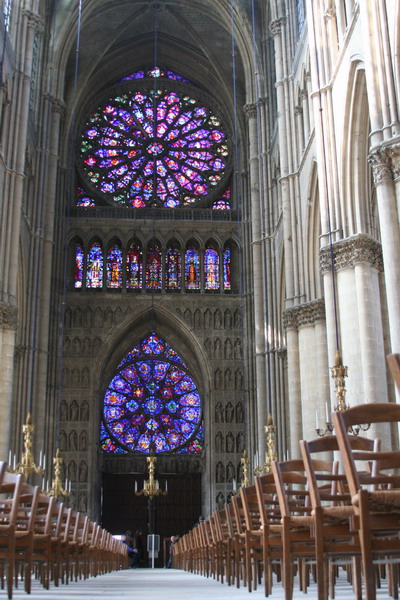
Anna and our friend, Hayley, make a beautiful counterpoint to the windows.
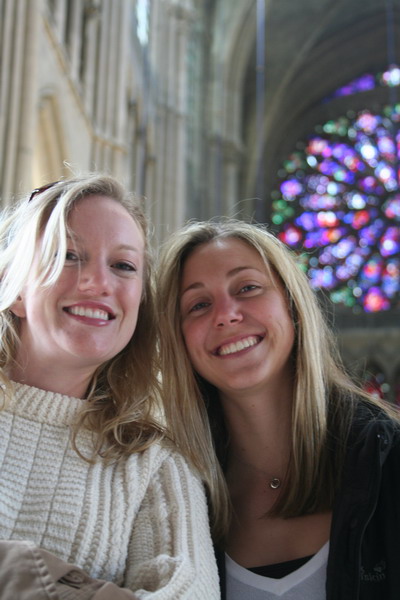
Less colorful, but still beautiful stained glass.
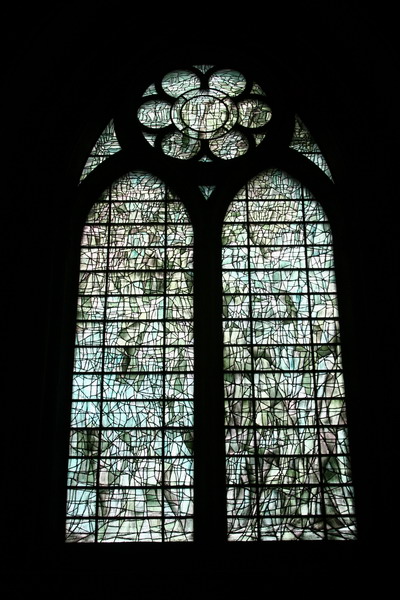
This 1974 Marc Chagall window looks right at home. Although born in Belarus, he was half French and contributed to a number of large scale civic and religious works.
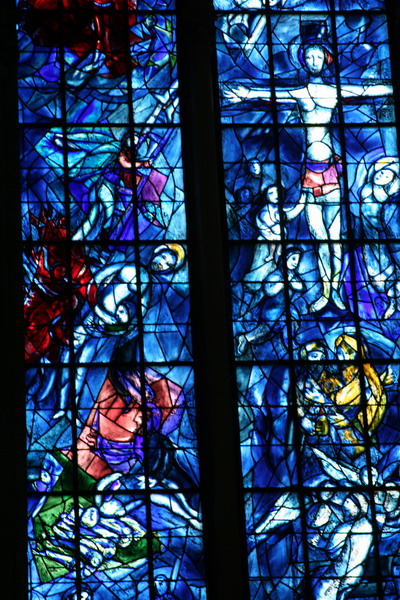
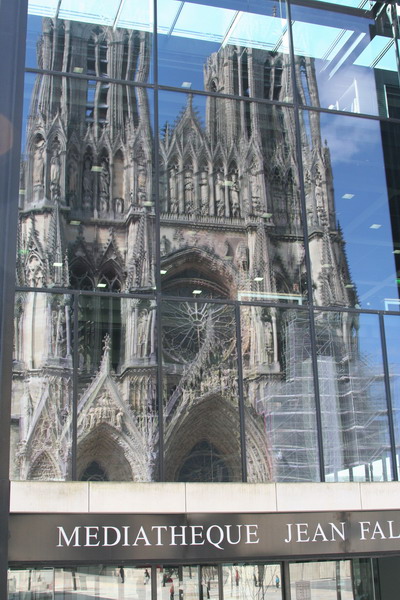
Next stop were the champagneries. First up was the famous Taittinger House.
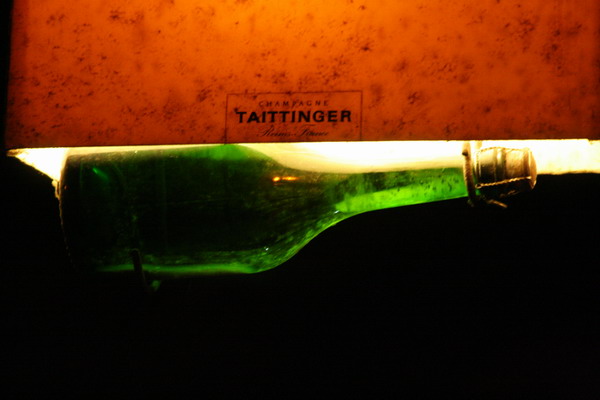
The cellars are carved out of the chalk soil. Many were carved in the fourth century by Roman city builders. Now they are a warehouse to permit the champagne bottles to properly age.
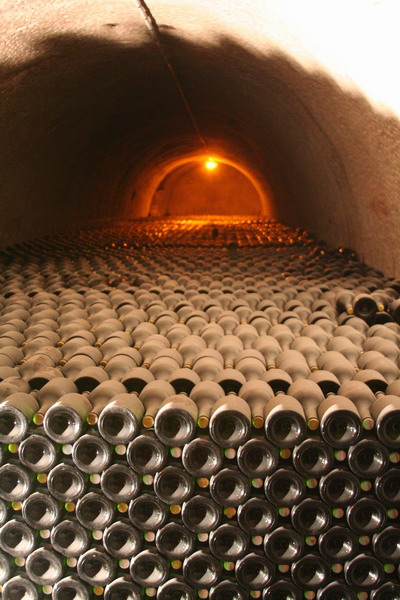
Hayley was hoping this one would spring a leak…
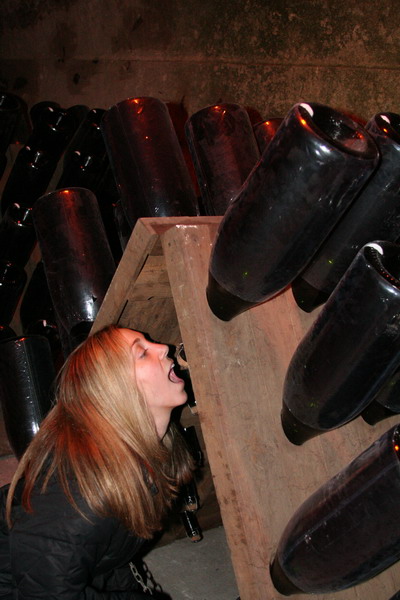
Ready to ascend back into the light of the surface world.
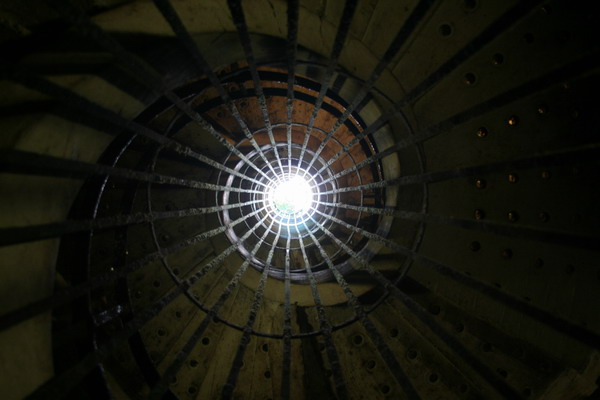
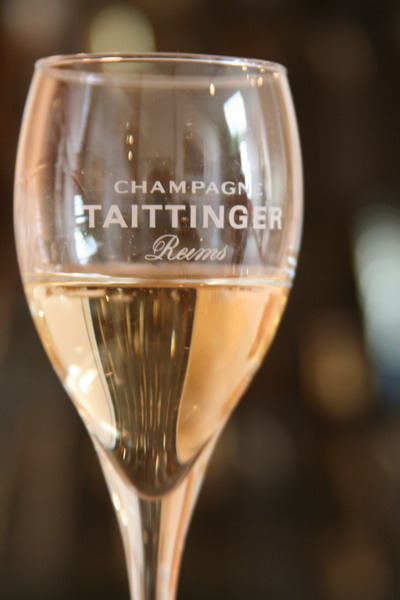
Next stop was outside of Reims, at a champagne house called:
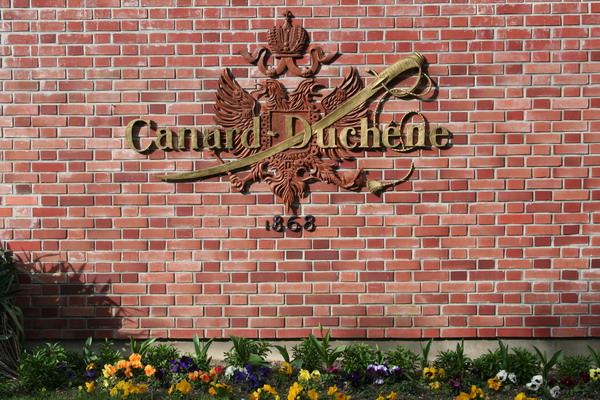
Although the vines weren’t blooming, it was impressive to see the rolling hills and vineyards. They told us each plant would produce about one bottle.
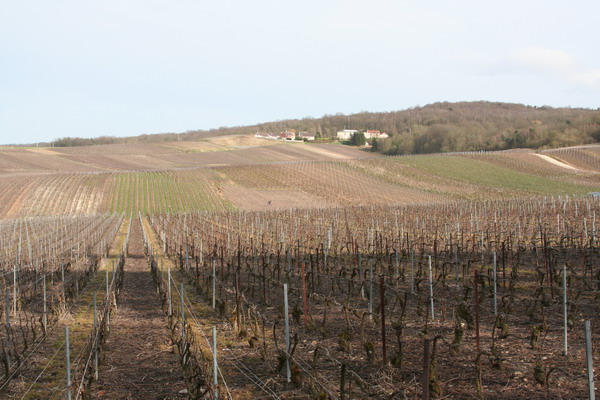
During the 3-8 process of aging bottles of champagne, eventually a small amount of sediment that collects at the cork. During the eventual bottling process, that sediment is frozen and disgorged. After, the void is filled with a small amount of still wine.
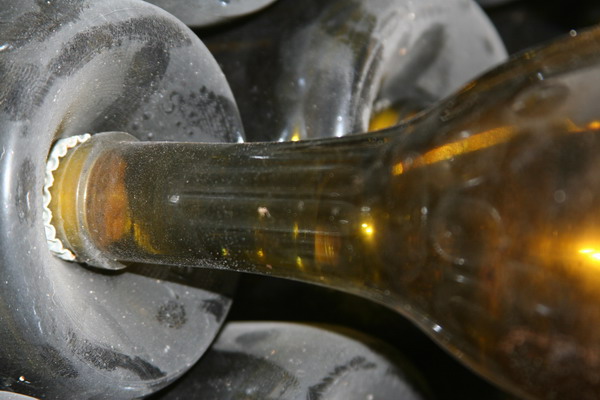
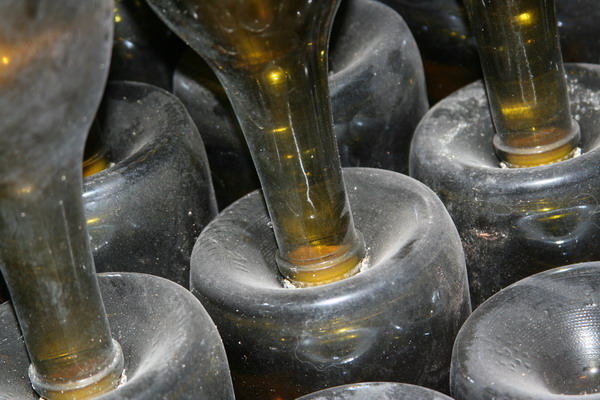
Interestingly, there are three grapes that typically make up champagne. Each house makes it own blend. There is a master wine maker who decides what amount from each grape is required. Also, we were surprised to find out that although champagne is golden in color, two of the three grapes are red. Once the grapes are pressed, the skins are removed. It is the skin that gives the red color.
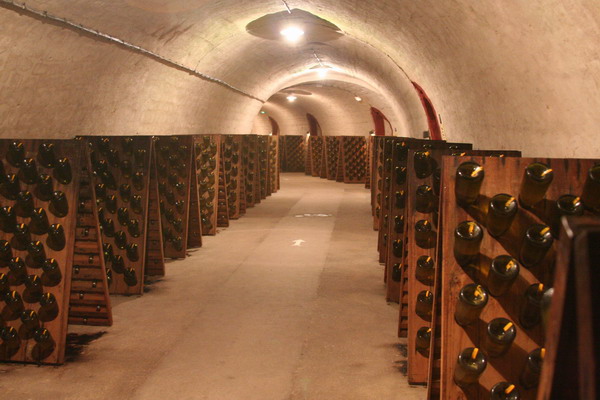
Then, there is the bottle size. Although most bottles are 750 mL, there is a whole range. The double is called a magnum (1.5L). Here you can see the high end of the spectrum. The largest here is called a Nebuchadnezzar. It holds a whopping 15L of bubbly.
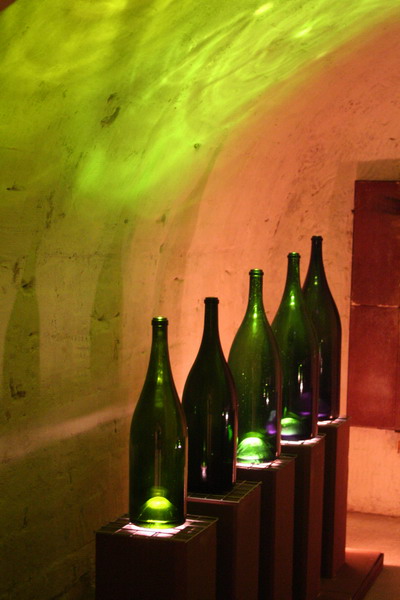
Hayley felt well connected with this random headstone…
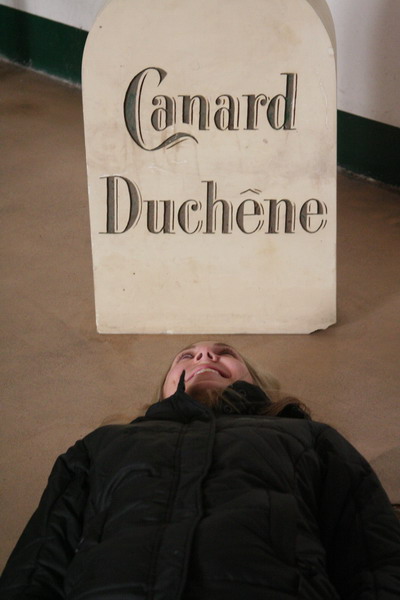
Although we don’t have any group pictures (that turned out), Dave and Dominique also joined the three of us.
Here is a picture from the bed and breakfast we stayed in. Our hostess was very nice, but when she found out I spoke French, she ceased speaking to us in English and told me I was responsible for translating. While I was flattered, she had a number of house rules I wanted to make sure we followed. Nothing like a little pressure to make you remember your French lessons!
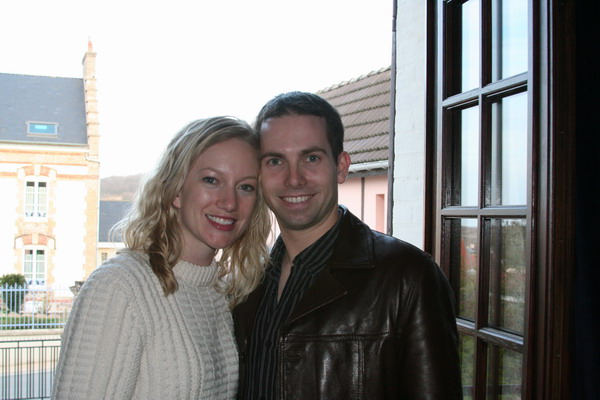
The next day we visited the town of Epernay and the second capital of Champagne. This is the home of the giant champagne house, Moët and Chandon. They also produce the world renowned Dom Pérignon. What most people don’t realize is that this was a real person and one of the first producers of champagne. He was a Benedictine monk who was the cellar master of an Epernay Abbey in the 17th and 18th centuries. There is much myth surrounding the man and this effervescent drink. However, what we know today is that his name is one of the most famous brands of quality champagne in the world.
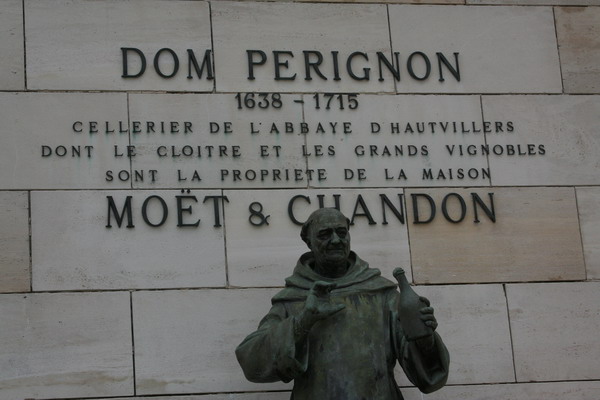
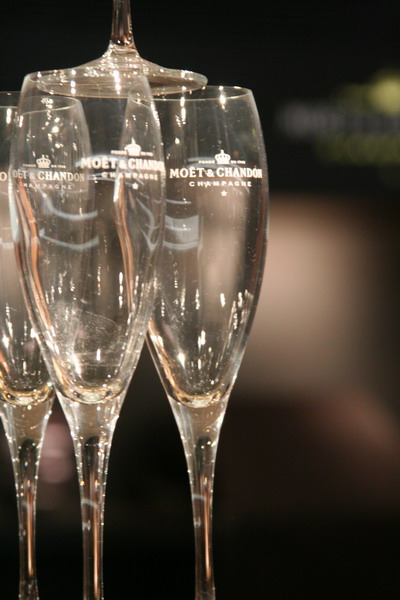
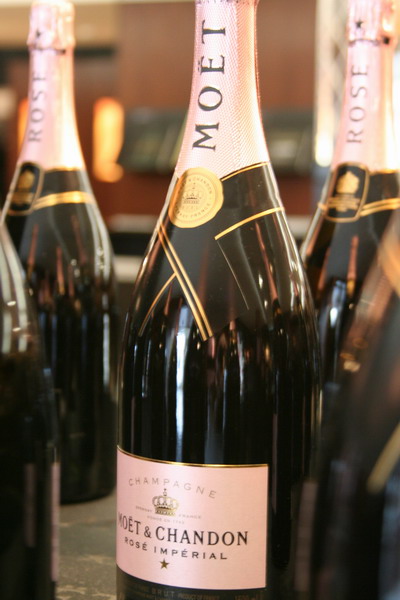
One thing is certain about the Dom today. His drink is expensive!
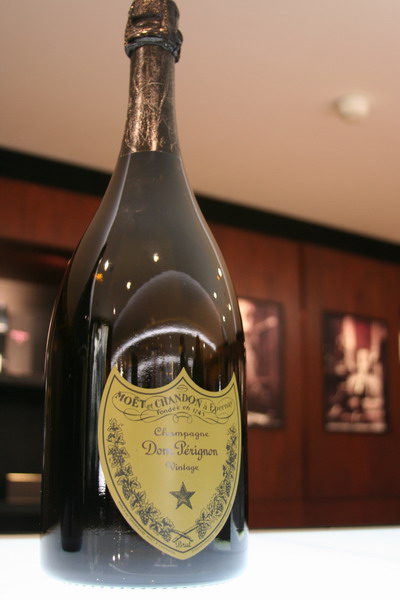
That concludes our trip into the nearby champagne region of France. It’s important to remember only wine produced in this region can truly be called Champagne. It’s EU law to respect this fact. Of course, in the US, that is not as important and many sparkling wines are inappropriately called champagne. Unfortunately for French champagne producers, EU law doesn’t extend to other parts of the world.
So, until the next adventure…
–Jim
Battle of the Bulge or Operation Wacht Am Rhein
A couple weeks ago, a group of us had the opportunity to witness the site of one of the most seminal battles of World War II. Officially it was named the Battle of the Ardennes by the US Army and Operation Wactch am Rhein by the Germany military, but popularly known as the Battle of the Bulge.
It’s a violent tale from history that happened right in our backyard. We had the opportunity to listen to a lecture by an American and Belgian historian. They provided us with background knowledge and pictures from the pivotal time before, during and after arguably the most important battle of the European theater in WWII.
For those that aren’t well versed in 20th century military history, please allow me to provide you with a thumbnail sketch of this titanic clash.
Toward the end of 1944, the allied advance through Europe had been faster than expected and stretched the forces out over a large expanse of the continent. This presented a severe logistical problem for the Allies and coupled with the failure of Operation Market Garden (British Field Marshall Montgomery’s failed attempt to bypass the Siegfried Line and cross the Rhine), presented a very tempting target to Hitler and the German commanders. So, the German military decided to try and split the American and British forces, in the hope that Germany could force both the US and UK to seek peace independent of the USSR in the East, thus giving Germany more time to complete their extensive work on secret weapons like jet aircraft, super heavy tanks/U-Boats and of course, nuclear weapons.
This belief sparked Hitler to try another Blitzkrieg (Lightning or Flash War) maneuver to encircle four Allied Armies and retake the Belgian port of Antwerp. This would mirror what the German Army did in 1940 during the successful Battle of France. The difference this time would be instead of using the Ardennes forest to cover the advancing German army, it would be the site of the battle. The close terrain of the forest made rapid movement difficult, which was ideal to trap an army (or armies) in the dense woods.
In order to achieve success, the German High Command needed to achieve complete surprise. Also, the weather had to be poor to neutralize the deadly air superiority. The German advance had to be quick to encircle and trap the allied armies and the Allied fuel supplies had to be captured intact, since the air raids in Romania had starved the German military machine of its lifeblood.
The Allied armies also suffered from a recent lack of intelligence. All through the campaigns in France and Italy, the Allies were able to intercept and decrypt ULTRA intelligence from German radio transmissions with the help of an Enigma machine. As they crossed into German territory though, the German army didn’t rely on the radio, but land lines which weren’t as easy to decipher. The very helpful French resistance was unable to supply information about the German homeland for obvious reasons as well. Finally, a foggy autumn also hampered the Allied forces from correctly assessing the situation.
Popular belief was that the German army was in no state to wage an offensive. Also, the Ardennes was considered a quiet sector, so it was used as a training ground for new units and a rest area for those that hard seen hard action.
This was soon to change.
On December 16th, the battle began. It was a multi-pronged attack, with paratroopers, infantry and armored cavalry, along with special tactics like Otto Skorzeny’s battalion of English speaking Germans. Their goal was to take vital bridges over the Muese River. Although they failed at that, they did produce great chaos and inflicted much damage on the logistics of the Allies. Checkpoints were set up all over the rear and servicemen were grilled on all things American. For example, what was the identity of Mickey Mouse’s girlfriend, baseball scores, or the capital of Illinois. That last question resulted in the temporary detention of General Omar Bradley. Although he correctly answered Springfield, the soldier asking seemed to think the correct answer was Chicago. Apparently American geography wasn’t the best back then either!
Unfortunately, when the main armored spearhead of the Sixth SS Panzer Army met the lightly armored American 285th Field Artillery Observation Battalion, there was very little contest and the Americans surrendered to the overwhelming German force. About 150 unarmed men were herded into an open field near Malmedy, Belgium. Although no official order appears to have been given, the Germans opened fire and cut down the American troops. Then, several went through the survivors and methodically spotted those still alive. Fortunately, a few escaped to bring the tale back to the others. This story spread like wildfire and similar to the Alamo or USS Maine became a rallying cry. It also led to the common practice of not taking prisoners.
This is an image from that massacre in 1944.
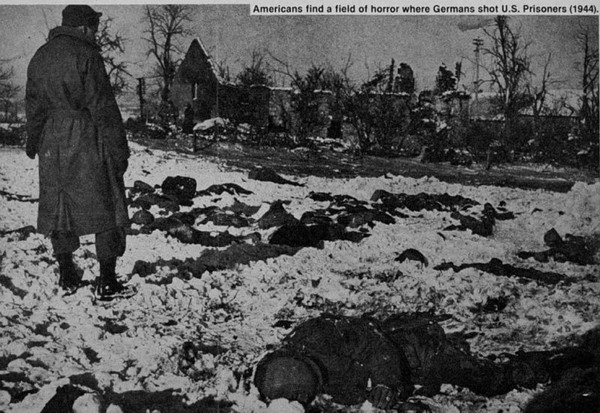
Today, outside of Malmedy, the field of the massacre is still just a field, but there is also a museum and two memorials to commemorate what happened. Here are a couple images of that memorial.
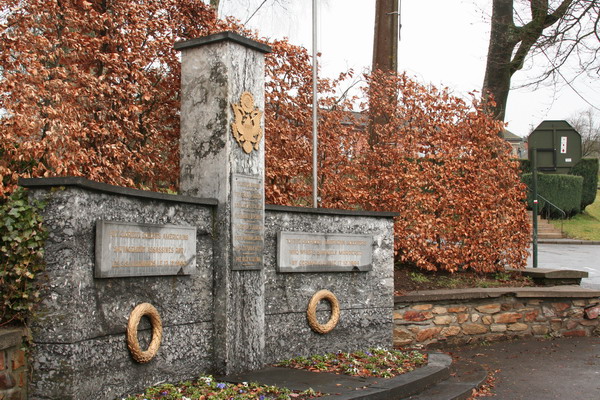
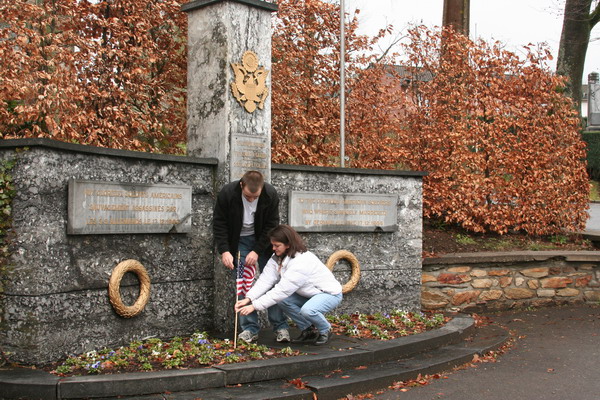
Several of the towns in the area still have reminders of the battle.
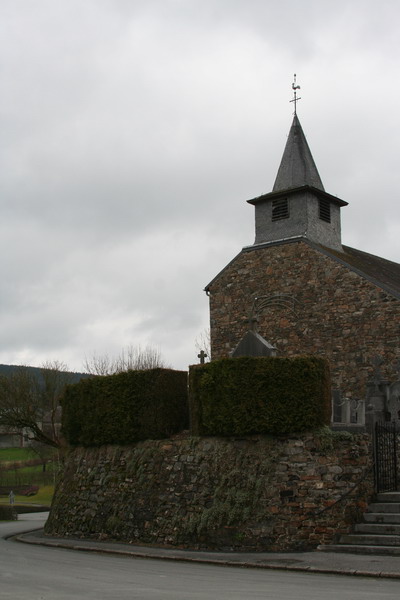
This 640 horse power, 50-ton, Tiger I Tank is another visual reminder of the power of the German military. It was a fearsome adversary.
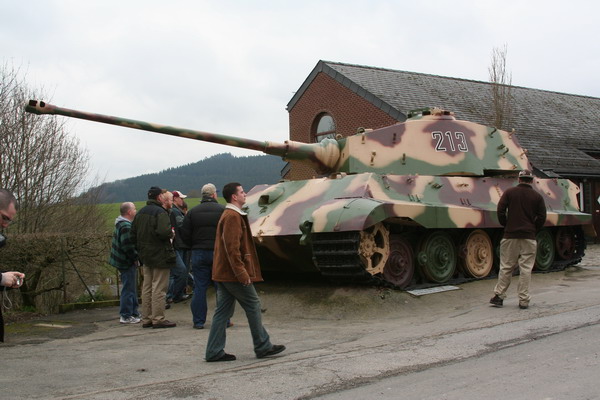
Of course, even in the midst of documenting this battle, flowers are a strong symbol of peace and regeneration.
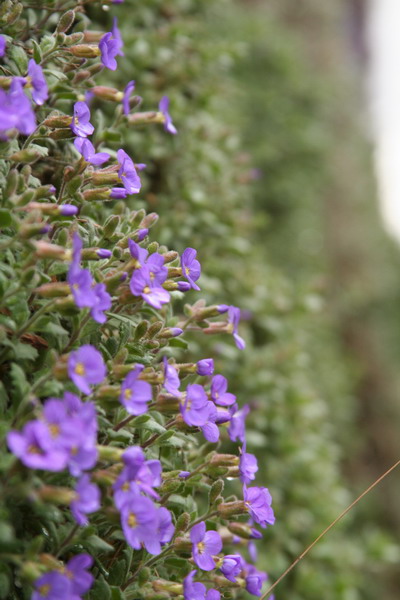
Our next stop was to witness the result of the ferocious battle, the Ardennes American Military Cemetery. This 90-acre memorial is the final resting place for 5,329 American service members, many of whom died in the Battle of the Bulge. You can see the American Eagle, a 17 foot high symbol of the American military. Beside it are three figures representing Justice, Liberty and Truth. The thirteen stars on the other side, represent the original colonies of the US.
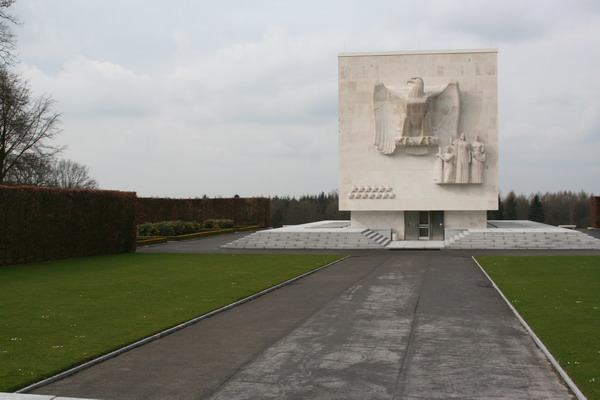
This sign shows that dogs are prohibited (even on a leash) and silence and respect are strictly enforced.
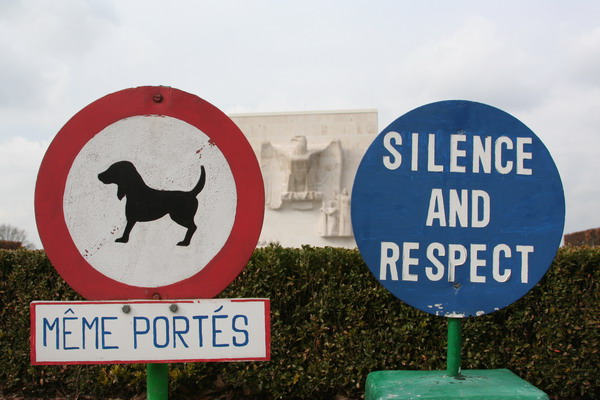
This relief map shows the bulge in the operation. Also, at the crossroads in the lower right corner is the town of Wittlich, near where we live.
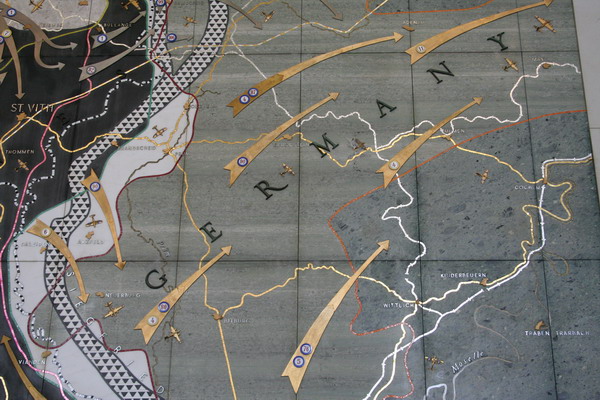
This legend depicts who was involved in the battle.
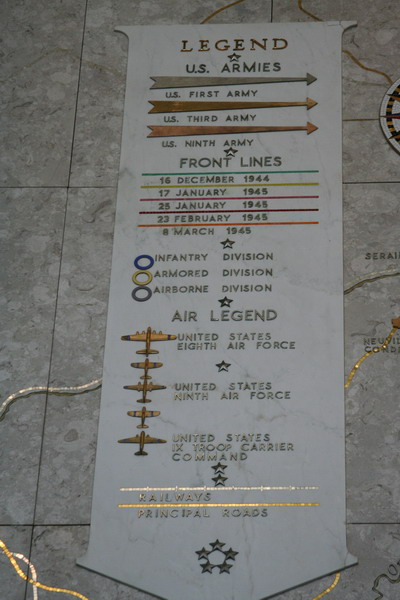
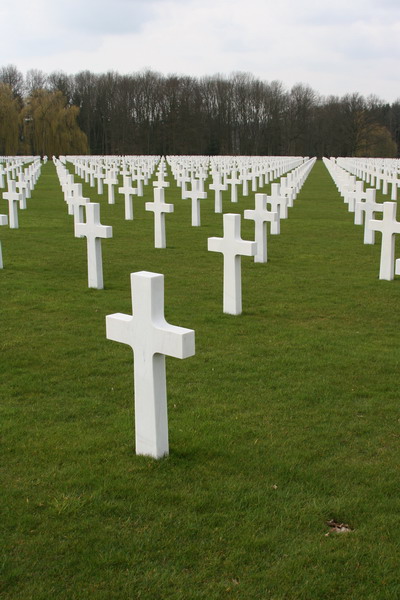
The several images below depict the grave sites. The overall layout is in the shape of a Greek Cross. Sixty percent of those buried here were Airmen. So, it made for a particularly poignant stop.
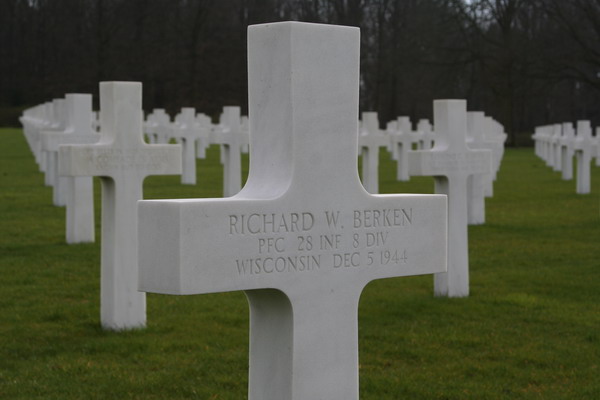
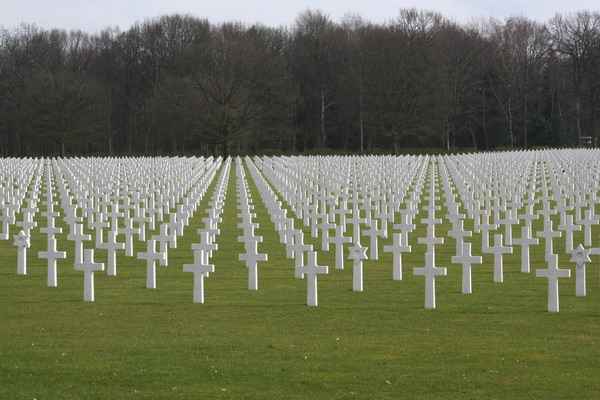
Here is another view of the Stars, Eagle, Justice, Liberty and Truth.
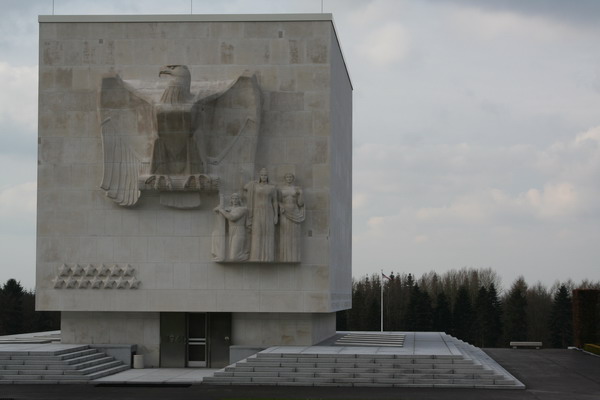
It was a very historic day. I am always humbled to take part in activities like this. A day to remember our past and not forget what it means to be an American service member.
So, until the next adventure … back in France.
–Jim
Berlin, Germany
Almost two weeks ago now, Anna and I visited Germany’s young, hip capital, Berlin. Although not quite the architectural gem that other European cities are, it has a number of merits.
We began with a visit to the Bundestag, Germany’s house of parliament.
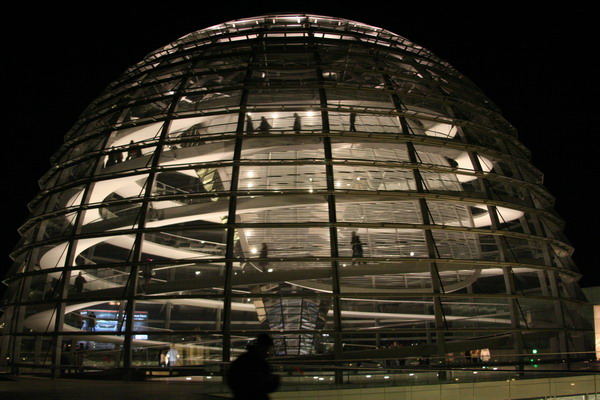
We took a night tour through the Reichstag Building (which until the World War II era was the name the Parliament). It was great to see the structure, but obviously didn’t afford us a chance to see a live session.
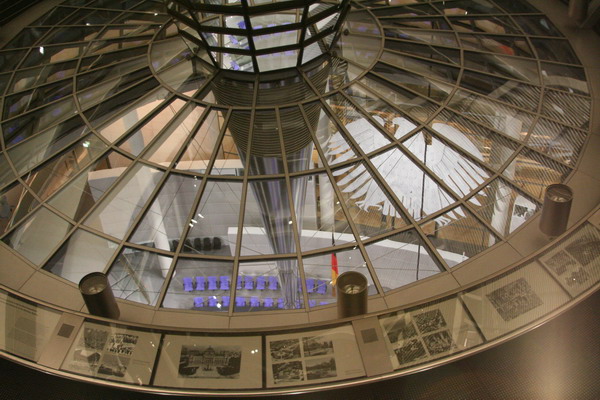
This facility was built at the end of the 19th century, and functioned as the house of parliament until it was burned down in 1933. That act of arson (who committed it has been a point of contention ever since) was the beginning of the end. It was the catalyst for the rise of Hitler’s Nazi party and all the atrocities that followed. Upon reunification in 1990, Berlin was again chosen as the capital city and soon after re-construction began on the original 1894 building. The renovation work gutted the interior and added this modern glass dome. As you can see below, there is a long shaft with mirrors to radiate natural light into the chambers below. The work to restore this building was complete in 1999 and it’s free to visit.
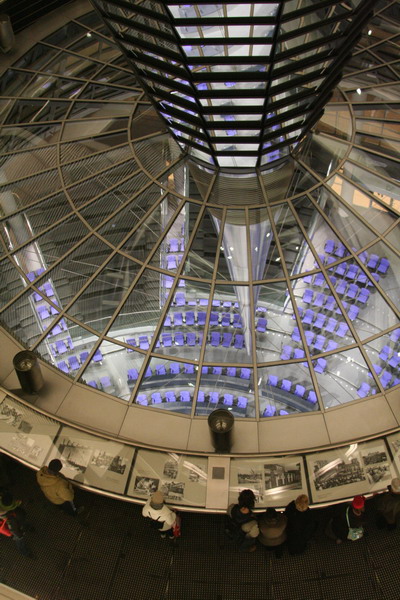
At the top, the bench and open roof are perfect for viewing the night sky.
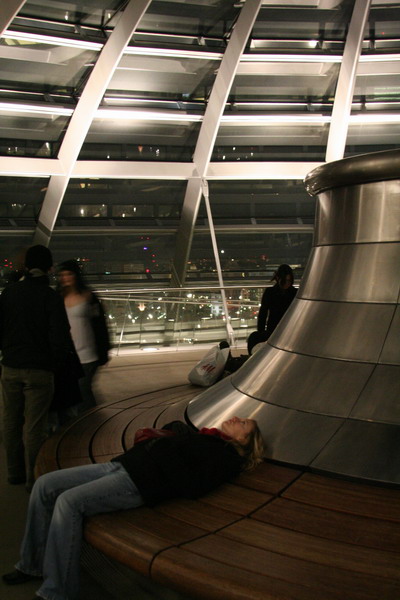
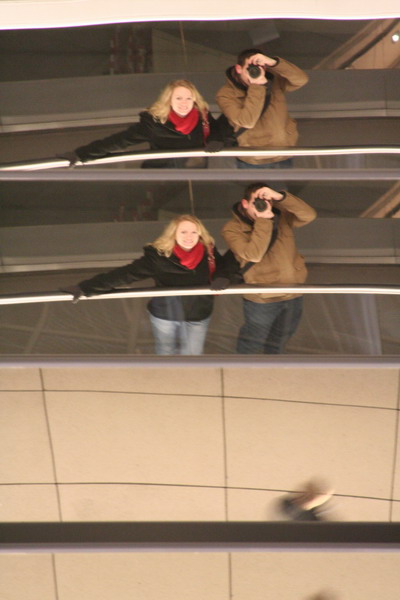
The city scape from the top was very nice. This is the very famous Brandenburg Gate.
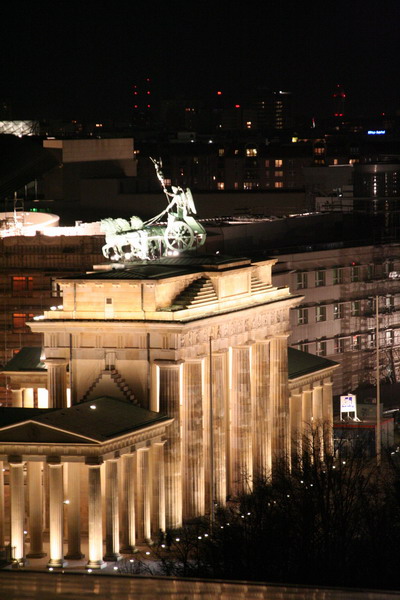
Over the next couple days, we went to tons of museums. As you can imagine though, not many photographic opportunities presented themselves. Even though I still have philosophical opposition to traditional zoos, we decided to go see our second zoo of the year. We assumed since it was Berlin, there would be a very … nice zoo. Unfortunately, the primates, like this gorilla, looked incredibly sad. I think that’s probably in part because they are such anthropomorphic creatures.
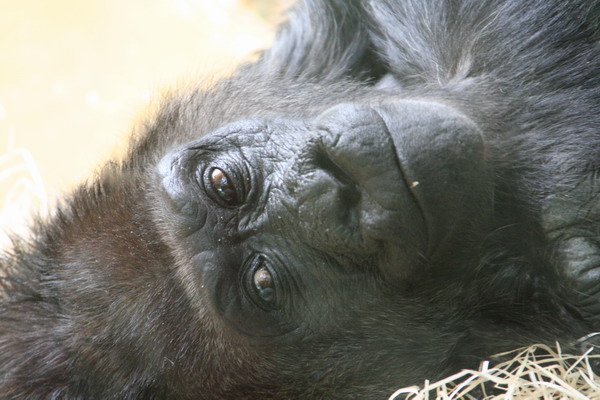
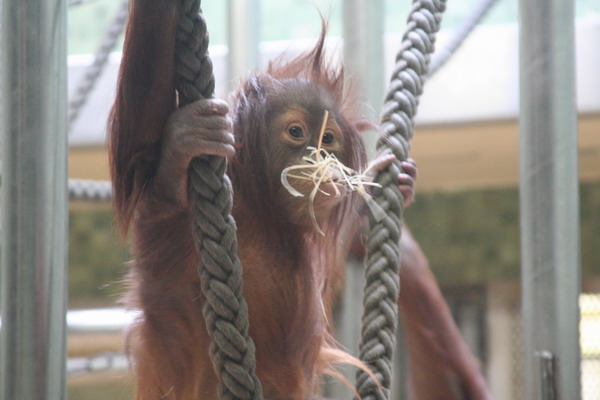
The Berlin Zoo claims that they have the largest number of species in the world. That may be true, but they also claim to keep the animals in “natural” settings. At least these two seemed to be enjoying themselves.
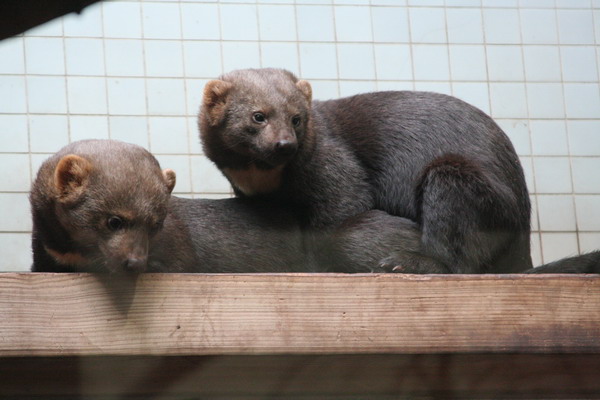
This leopard didn’t seem too happy, but he is a beautiful creature. It’s a shame he is in a cage. Although I have my doubts about zoos, there is a lot of good they do to promote wildlife conservation and bring people closer to the wild world, not normally accessible. However, after spending a lot of time chasing these same creatures in their natural setting, it seems hollow to watch them impotent in these cages.
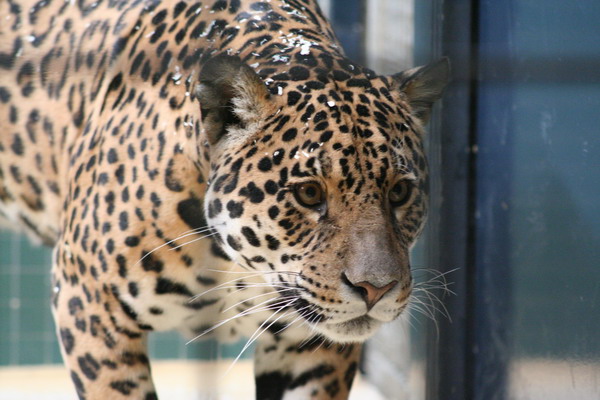
It seems that sea lions can play anywhere.
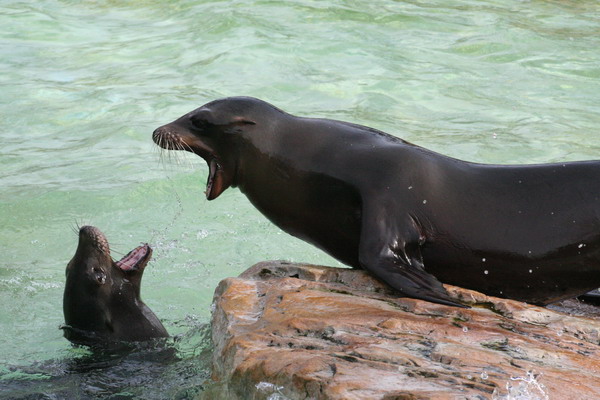
Part of the same complex is a three story aquarium. This cuttle fish greeted us as we entered.
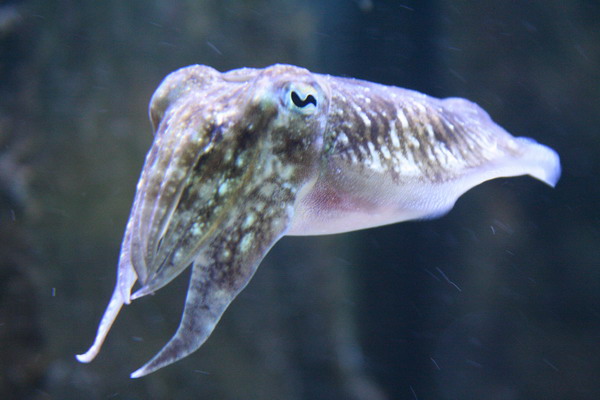
The aquarium is renowned for its jellyfish and this guy did not disappoint.
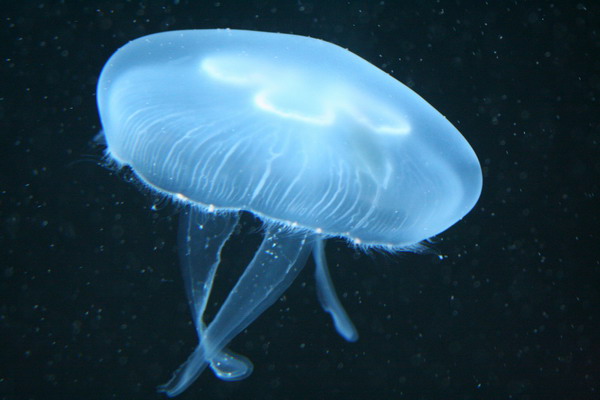
These next two images are of one of the most pre-historic looking fish I’ve encountered. It’s named Arapaima and is found (among other places) in the Amazon river. You can see how large this fish is. Interestingly, it can breathe air through its mouth, which allows it to survive long droughts, or places like the often oxygen deprived Amazon.
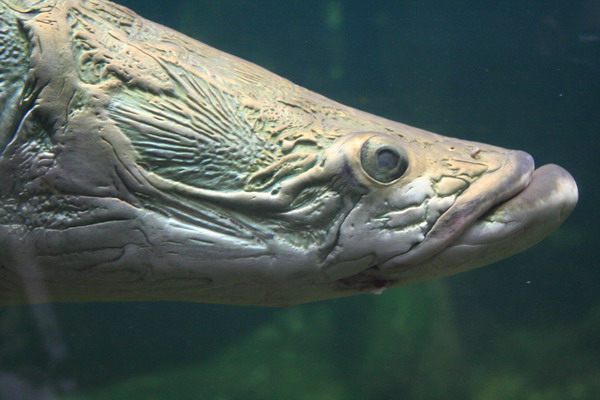
Yep, he’s a big one!
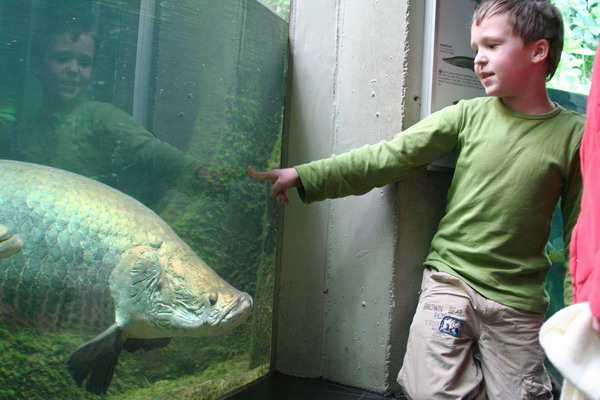
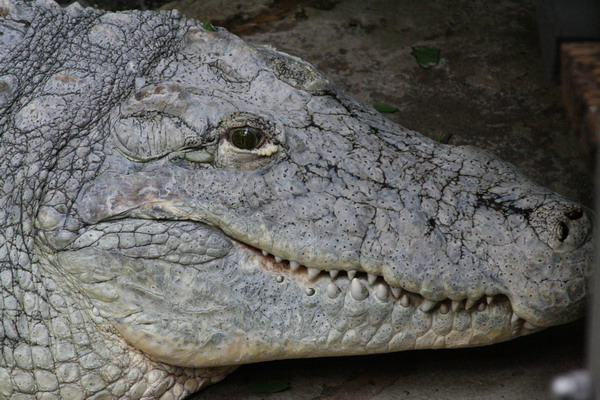
After the city was ravaged by World War Two, the Allied powers (USA, UK, France, and USSR) broke the city into four sectors to administer. Soon thereafter, the Soviets decided to segregate their part of the city. In 1961, they built the infamous wall to physically make the separation. It was also the manifestation of the Iron Curtain that Sir Winston Churchill described five years previously in his “Sinews of Peace” speech.
To commemorate those 28 years of separation, bricks now trace the former path of the Berlin Wall.
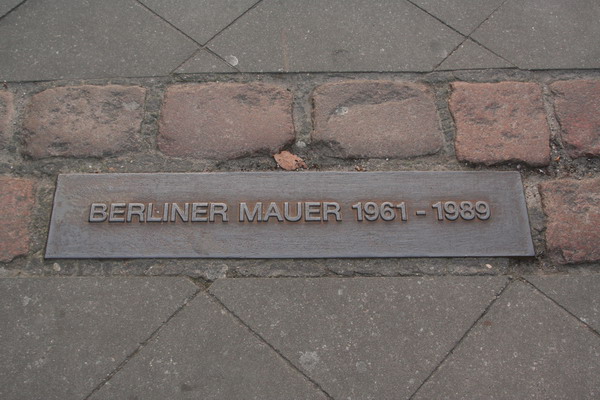
Although virtually all traces of Hitler has been wiped out, the former headquarters of the SS and Gestapo has been excavated to reveal its foundation. Along with these ruins, there is a riveting story-board display to recount the history, rise and pain inflicted by National Socialism in Germany.
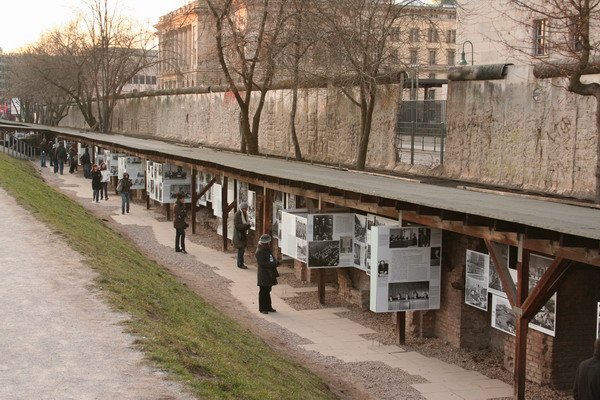
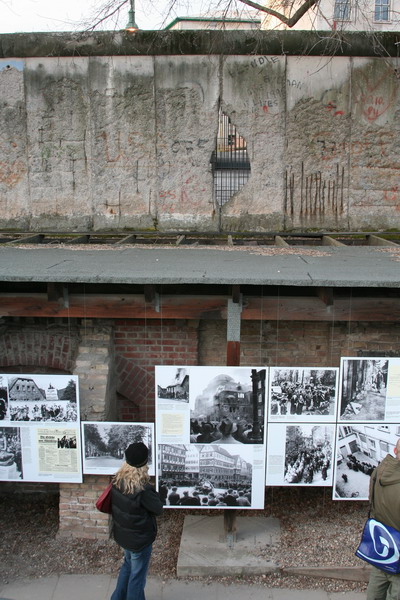
This is the view of CheckPoint Charlie going into the American sector of former West Berlin. You’re probably familiar with CheckPoint Charlie, did you know that CheckPoint Alpha was the border crossing between East and West Germany at Helmstedt. Bravo was the autobahn checkpoint outside the city in Wannsee, but hasn’t been used since the 1960s and has all but disappeared. Also, CP Charlie was the only crossing that foreigners could use.
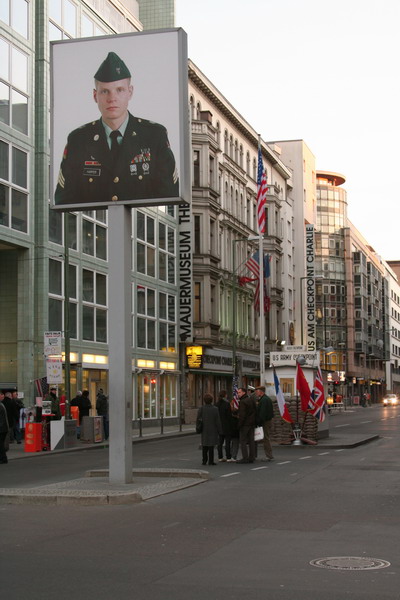
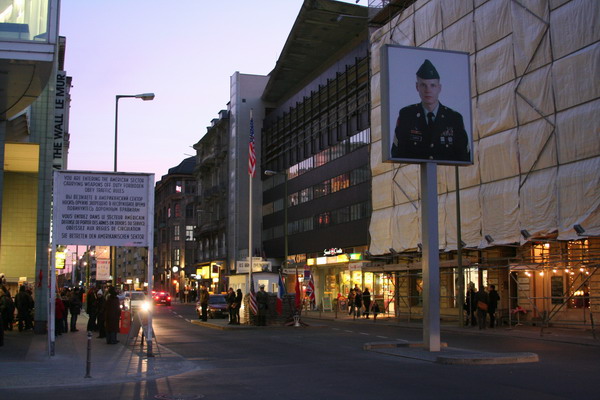
Conveniently, for those who wish to obtain an East or West German passport stamp, there is a well dressed actor, happy to oblige. The face he is making here is a very German one.
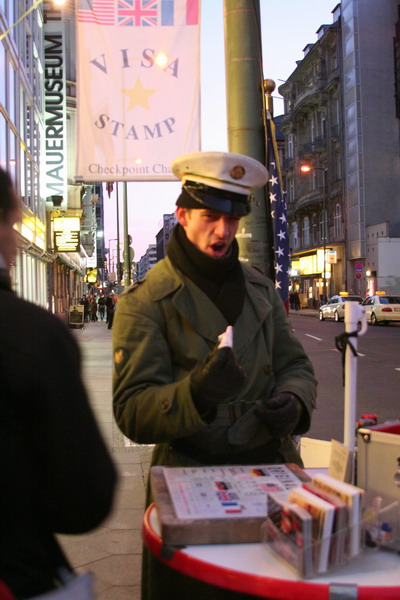
He did well interrogating those applicants on the details of their passport. Do you know what your passport number is?? You probably should…
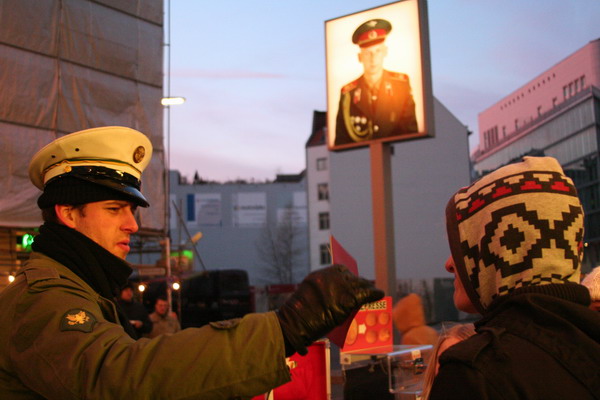
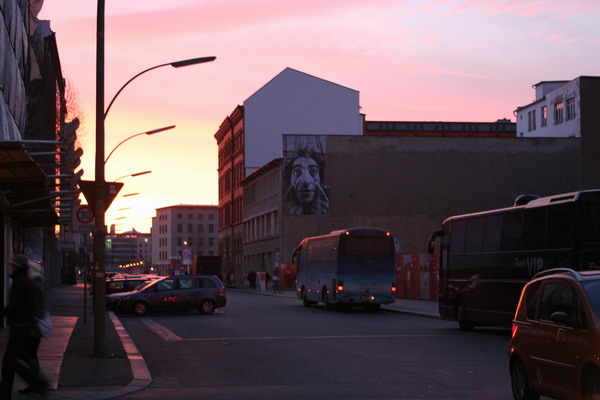
Here is another image of the Brandenburg Gate, built in the late 18th century, now an icon of the city. It was originally designed to be a courier of peace, but after Napoleon temporarily commandeered it, it was re-crafted to represent a goddess of victory.
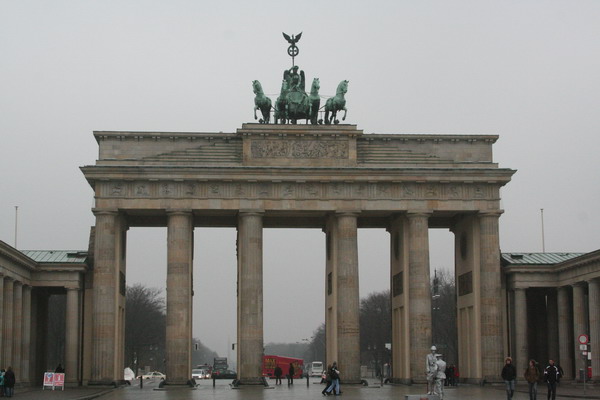
After an intense few days, we drove back home, very satisfied. This capital has an exhilarating story to tell. Although we only got the abstract, we loved it.
So, until the next adventure.
–Jim
Riquewihr, France
Last weekend we decided to head to the nearest ski hill, in the French region of Alsace. Fortunately, it’s only a couple hours away. So, it’s close enough to make it down and back in a day. However, we decided to stay the night in the charming village of Colmar (which you may remember from our earlier post on this region). The next morning, we made it to the ski hill and had a very enjoyable day on the slopes (albeit a warm one … it was 11 degrees Celsius that afternoon when we left). However, we left with enough time to stop by one of the 146 Most Beautiful Villages in France … Riquewihr.
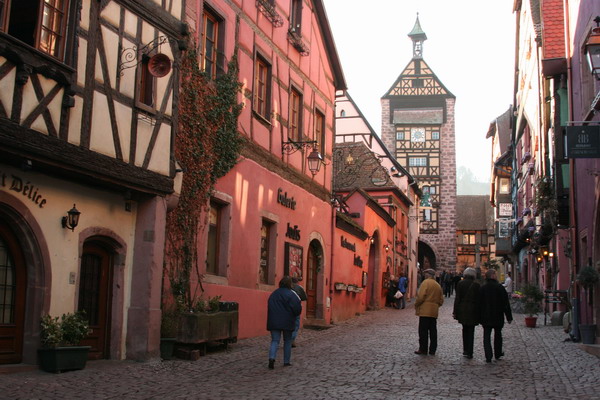
This is a village that hasn’t changed much in the last 400 years. Although it has become very touristy, it is still very charming.
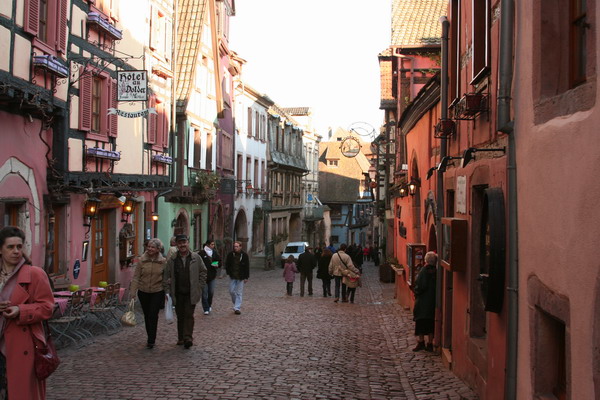
Since it wasn’t tourist season, we almost had the place to ourselves.
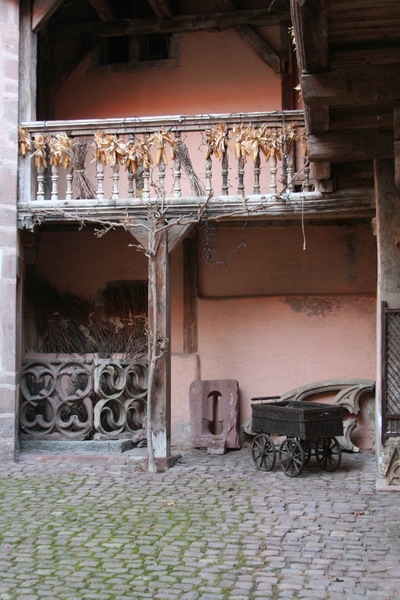
It was fun to wander around and see the beautiful architecture.
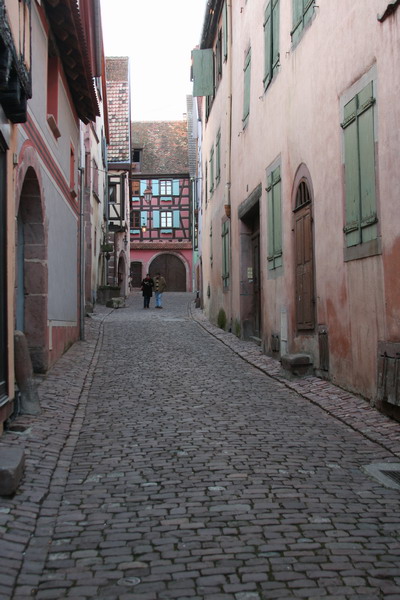
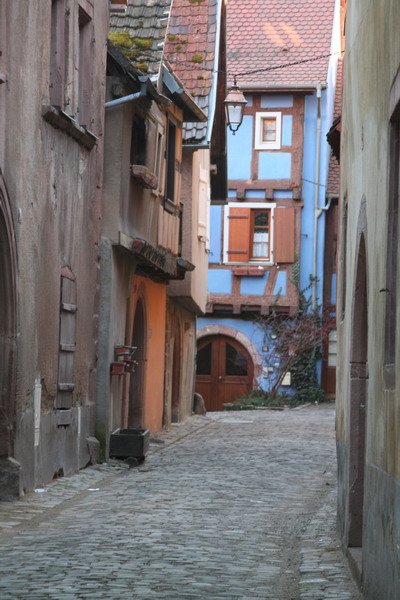
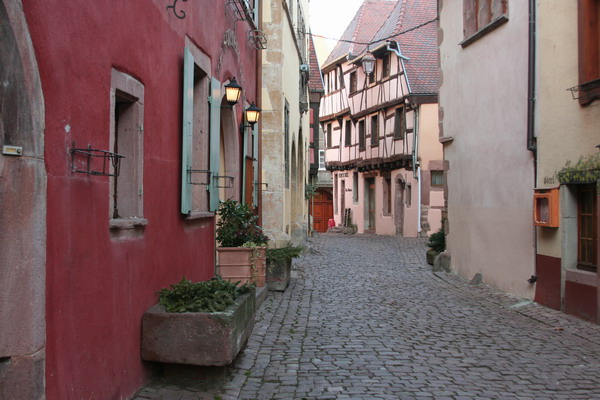
After we had sufficiently meandered through the streets, we hopped back on our steed, err, car and headed home.
So, until our next adventure (Berlin)…
–Jim
Stonehenge
OK, so I’m a little behind in my posts. So, I am going to attempt a quick three to catch up.
These are from a couple weeks ago. I had the opportunity to go to England again. Unfortunately, I spent most of my time working, and only had a couple opportunities to go sight seeing. The one that beckoned me the most was Stonehenge (plus, Anna isn’t a fan of driving several hours to see a bunch of rocks and she decided not to join me on this trip). So, off to see the ancient site of Stonehenge…
Although we still don’t know exactly why or who created Stonehenge, the one thing that is certain is that it took a lot of effort for people to create this massive monument.
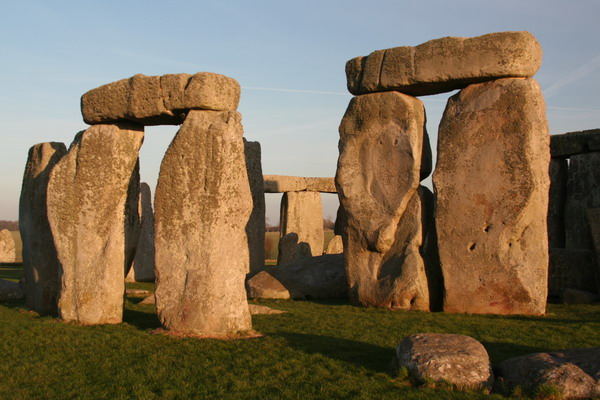
Initially, the site was a large earthwork (a bank and ditch) called a henge. This done about 5,000 years ago by the people of the neolithic era. Although popularly believed to the work of Druids from the Celtic people who lived nearby, there is nothing proving that theory. The only thing that seems to be certain is that the second phase of construction aligned the stones with the sunrise on the summer solstice.
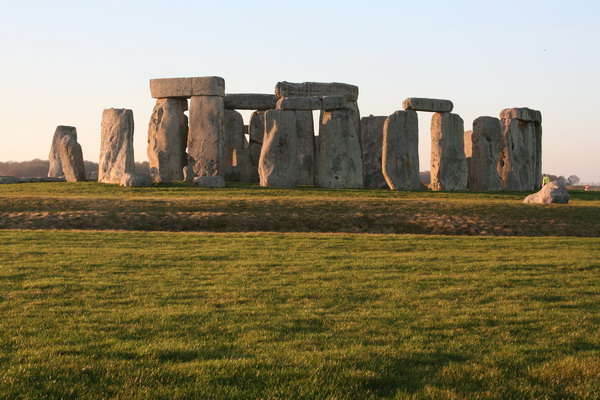
While, I was a little early for the summer solstice (also the only day people are allowed inside the ring for the last 30 years), it was still quite majestic to watch the sun set through the massive (some up to 50 tons) stones.
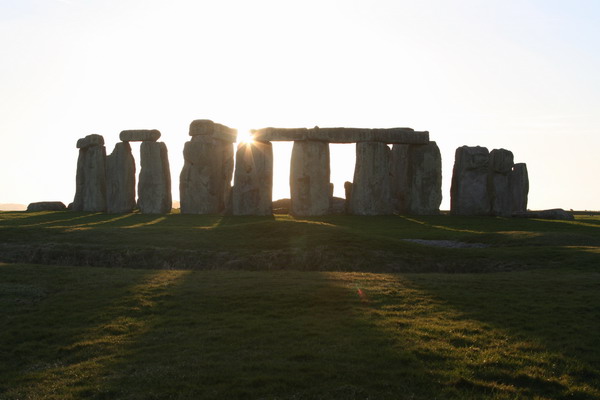
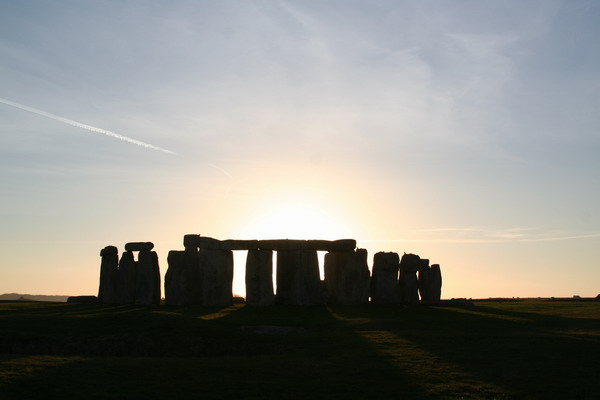
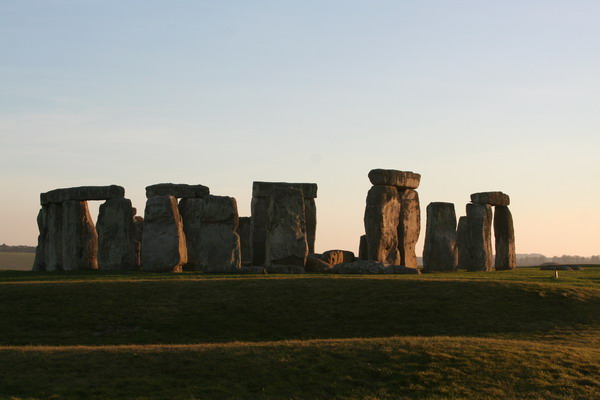
It was an impressive site to behold. I was very glad to have the opportunity to see it firsthand to truly understand what an impressive feat it was to create this monument.
So, until the next adventure (in France)…
–Jim
Stockholm
Last weekend, we took our first trip to Scandinavia. In particular, to visit the Swedish capital of Stockholm and the unofficial capital of Scandinavia. Interestingly, Stockholm is nearly the same latitude as both St Petersburg, Russia and Anchorage, Alaska. While the days are short (right now the sun rises at about 8:00 AM and sets at 3:30 PM), it wasn’t as bad as we expected.
Although the temperature and wind were very chilly, we didn’t see much actual ice.

One of our favorite things to do when it’s rainy outside is visit museums. Fortunately, for us, Stockholm had plenty on the first day. In fact, there are about 70 and all of the ones we visited were fascinating.
The first was the Vasa Museum. Although the museum really only has one subject … a seventeenth century warship, it provided hours of entertainment and history lessons. When it was launched in 1628 to aid the Swedish King, Gustavus Adolphus, he was embroiled in a war with Poland. The Thirty Years War didn’t seem to be going very well for the Protestants. Since Sweden was very protestant by this time, the King pressured the ship builders to complete the ship quickly and with two gun decks. Unfortunately, this made the ship very top heavy. On its maiden voyage with only a small crew (and visitors) on board, the ship tested the guns with two barrages to salute the king. Soon after it let out the sail in open water, it encountered stability problems. With the gun ports open it couldn’t right itself and sunk to the bottom in a matter of minutes. It stayed at the bottom for the next 333 years. In 1961 to much international fanfare it was raised to the surface. Over the next two decades, it was painstakingly restored. Amazingly, it is 95% original and to preserve the wood it was covered in polyethylene glycol (which is very similar to ethylene glycol used to deice aircraft).
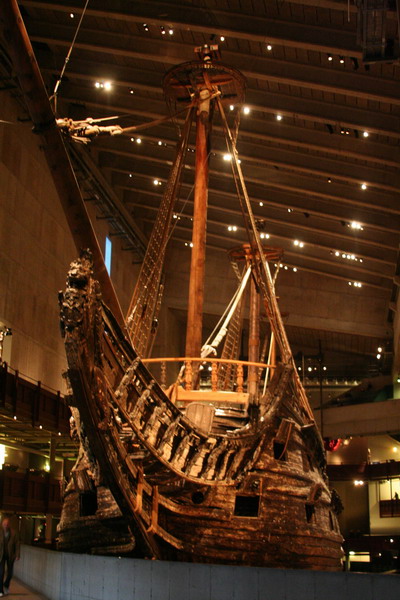
Here you can see where the 64 guns were placed.
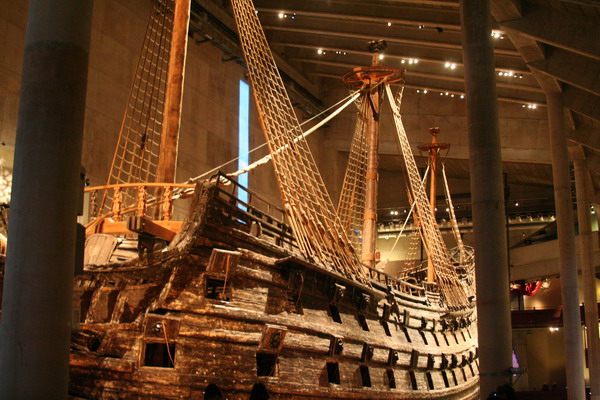
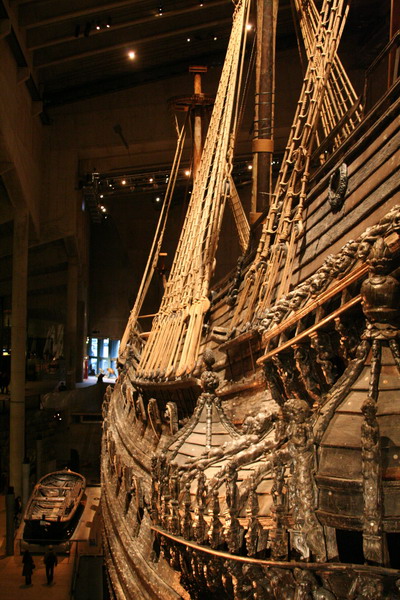
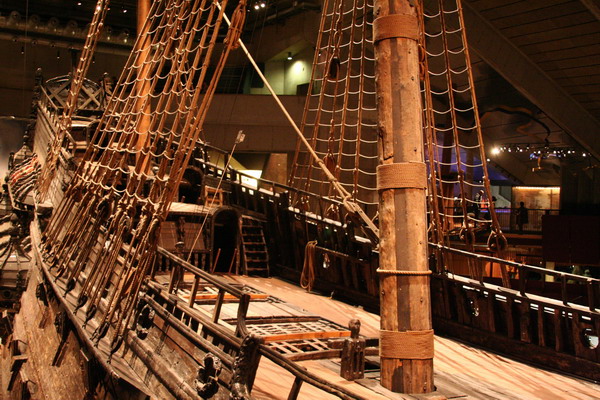
This rather macabre display was also a fascinating look at the life of 17th century sailors.
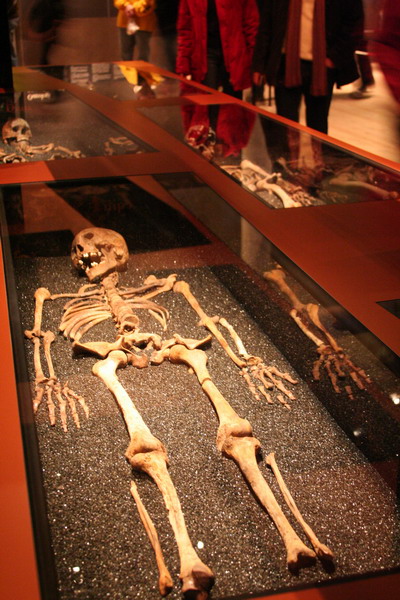
The Swedish Royal Palace is guarded by troop of soldiers who perform a daily ceremony to rotate in a fresh crew.
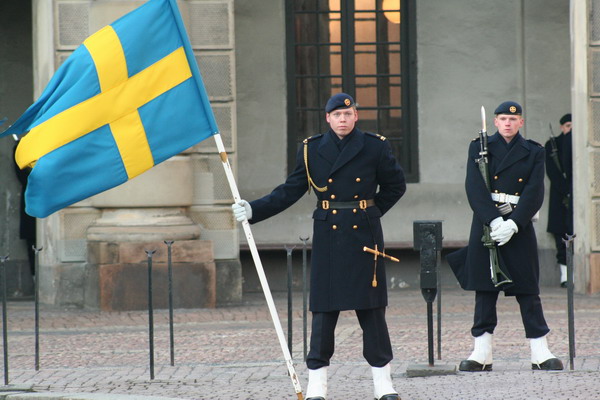
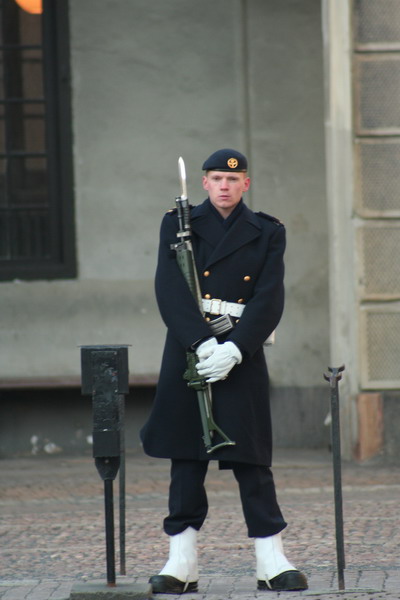
These soldiers are serving their compulsory military service. An interesting idea … compulsory military service.
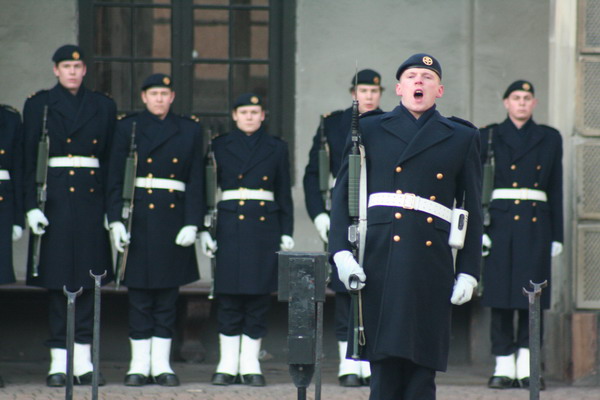
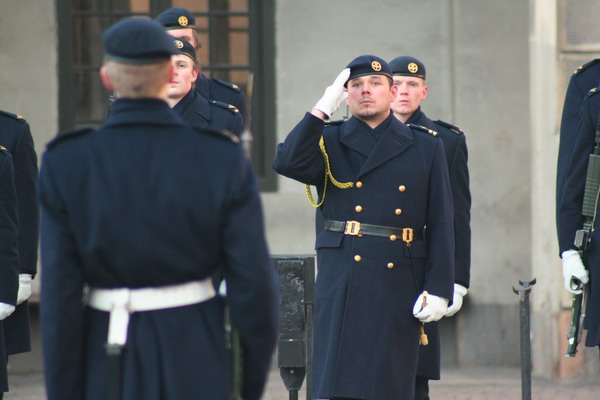
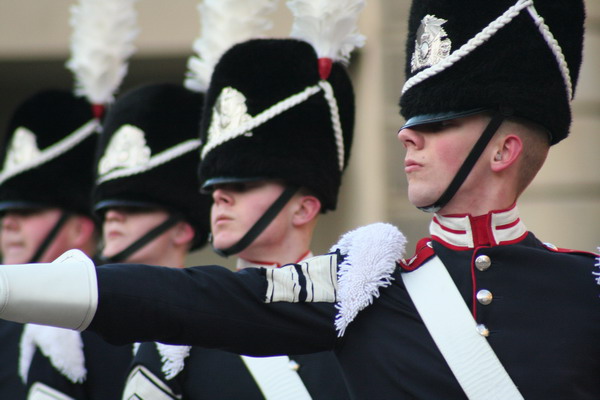
The band provided great music to accompany the ceremony.
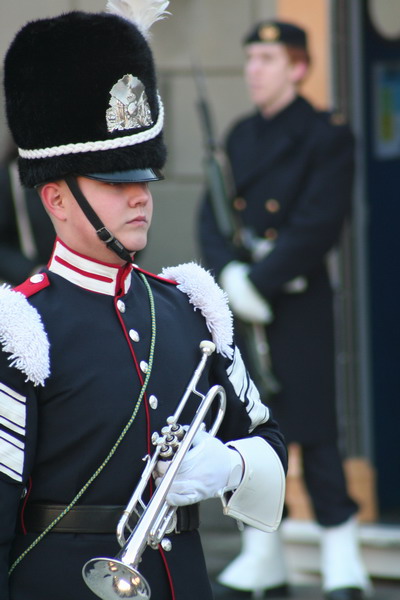
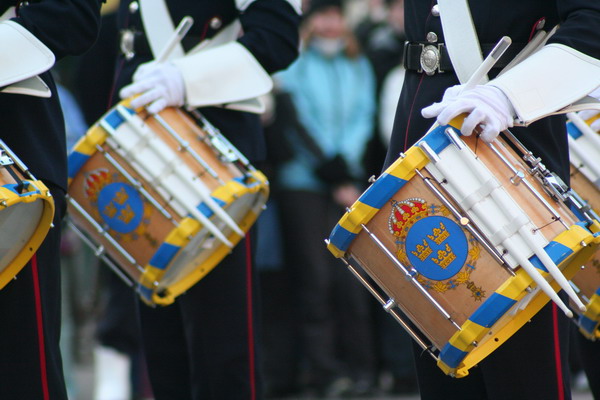
Here are a couple images of the Old Town, Gamla Stan.

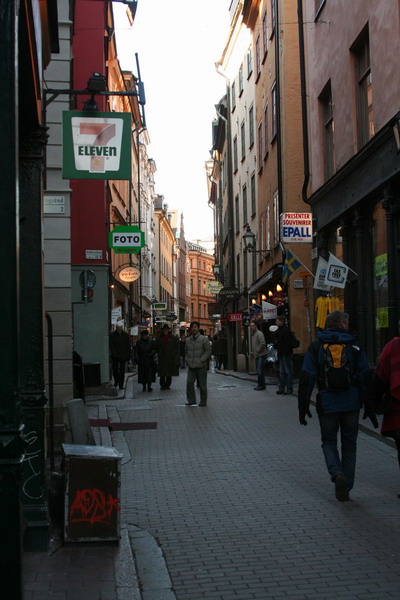
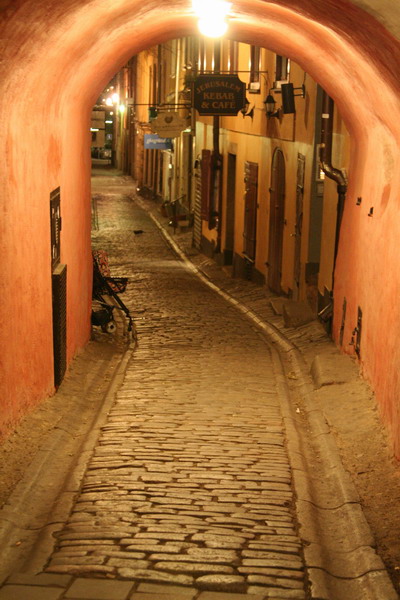
Although it was campy and ultra-touristy, we stopped by the Ice Bar. We would have preferred to stay in the Ice Hotel, but that was a long way to the north in Lapland. So, this had to do.
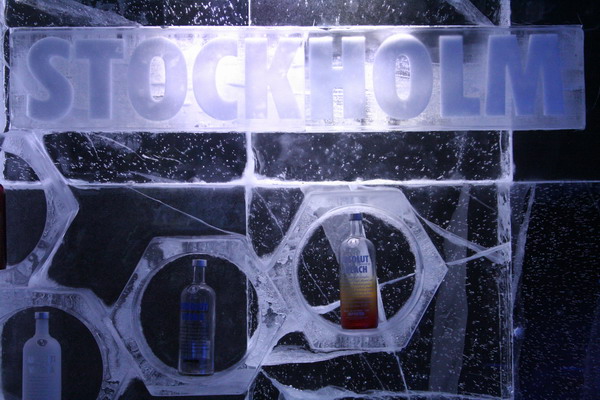
Sweden’s famous vodka was flowing freely at the bar.
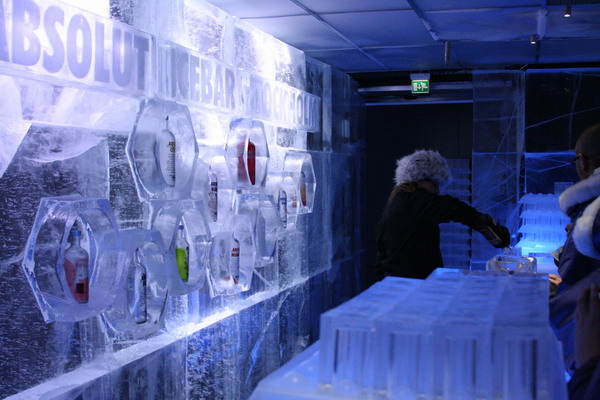
Although the floor and ceiling are not ice, virtually everything else was … including the cups (the word glass just doesn’t work).
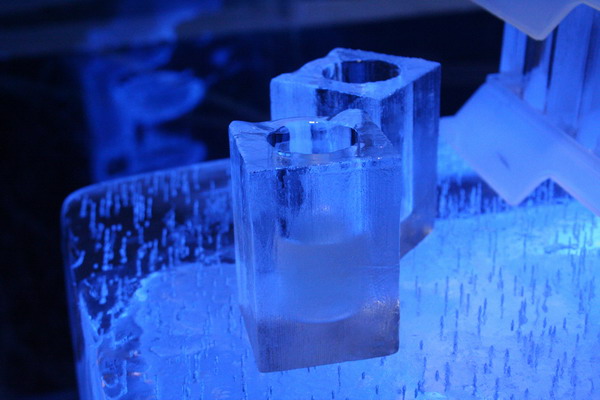
This is what happens if you lean on the table for too long in an ice bar.
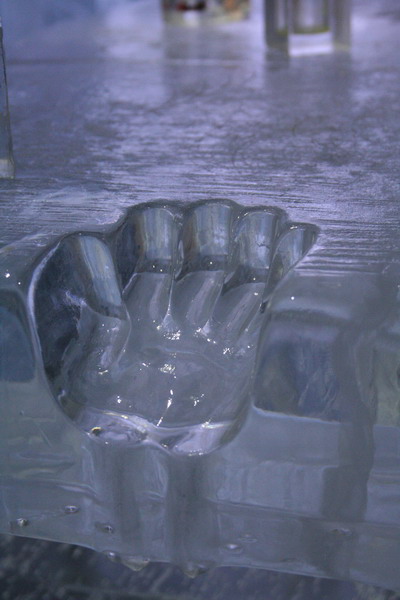
They are kind enough to provide parkas to keep everyone warm in the chilly bar.
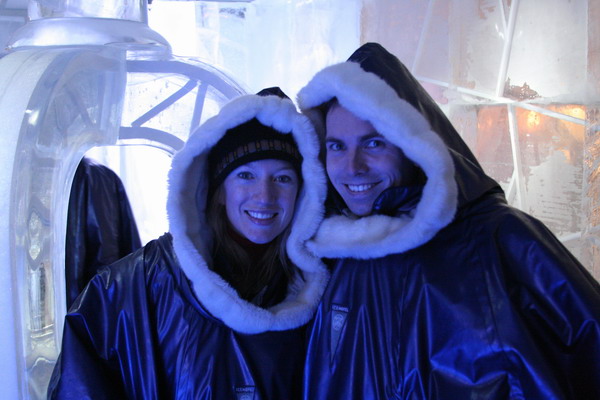
Another great museum we toured was the Skansen Open-Air Museum. This was founded in 1891 and was the first of its kind. The idea was to show what life was like throughout Sweden. So, houses and buildings were brought in from all over the country, filled with people in period costumes who are eager to answer any question visitors have and
many animals from the country. Unfortunately, the day we were there it was very overcast and bleak. So, we don’t have any pictures of the dwellings, but below are a few images of the native inhabitants of Sweden.
This wolf is very handsome in his winter coat.
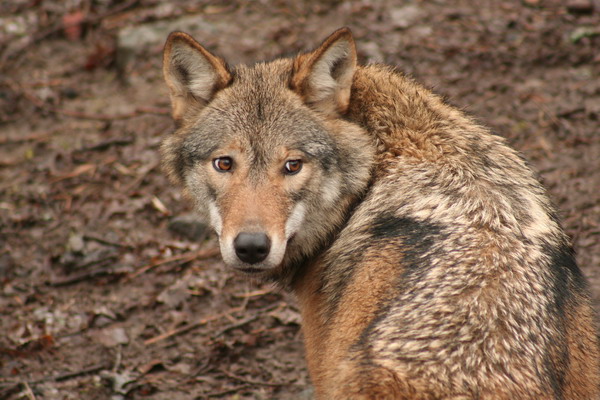
It seems I have an affinity for cats and this lynx is no exception.
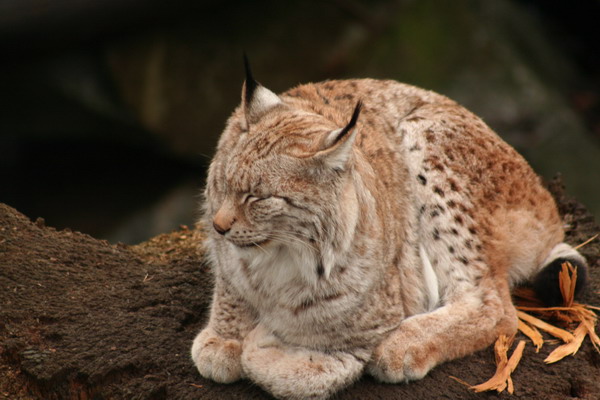
This Great Gray Owl seemed to be watching everything all at once.
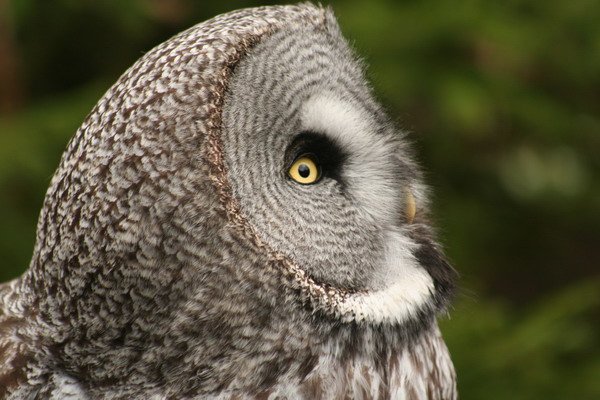
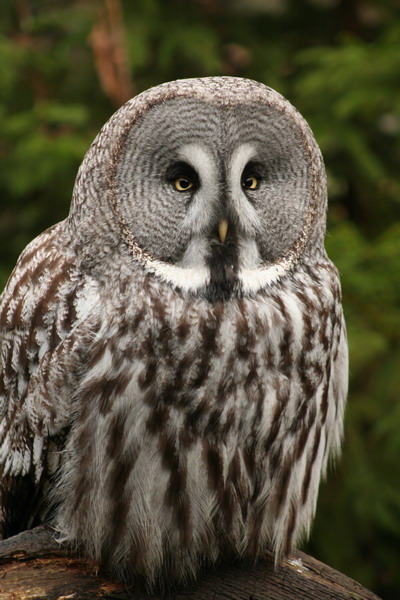
The moose is a favorite of ours from Canada as well.

Beside the local fauna, there was another museum that had a number of more exotic inhabitants. This first image is of Green Boa.
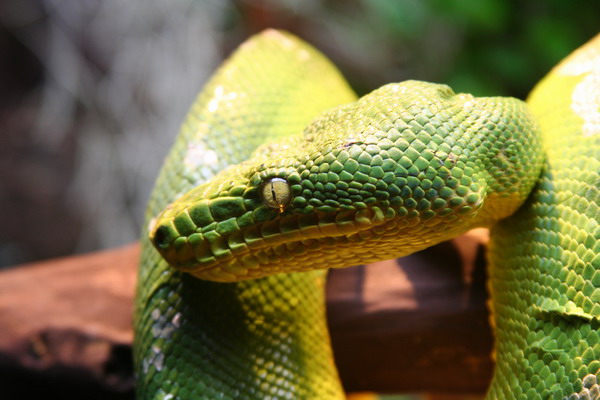
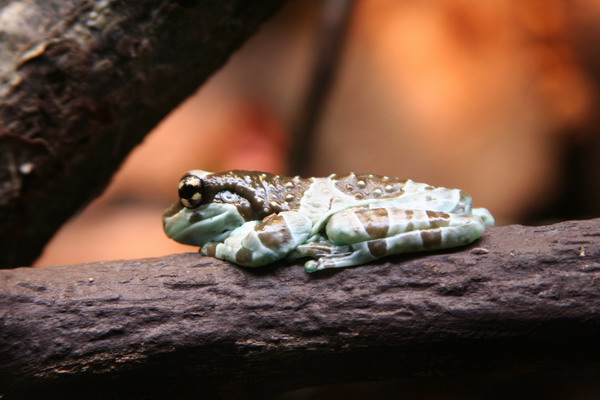
This Bamboo Lemur from Madagascar was non-stop motion.
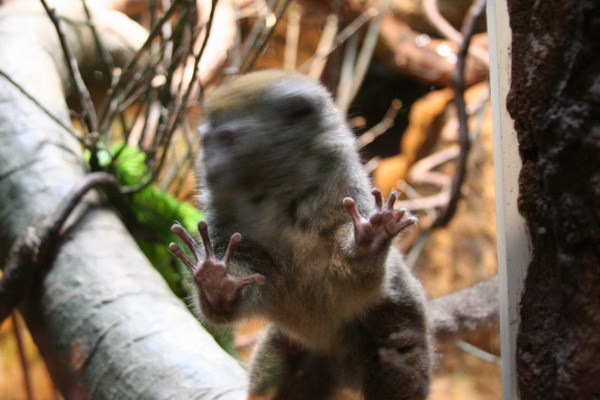
This is a Red Titi Monkey from South America.

Another transplant from South America, the notoriously slow moving Two Toed Sloth.
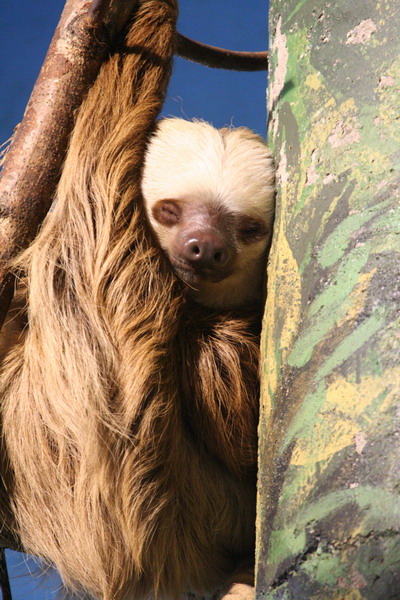
A dragon-like Variable Bush Viper from West Africa.
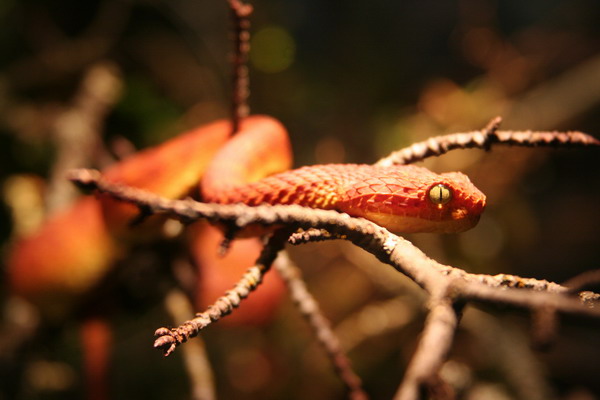
So, that concludes our first foray into Scandinavia. We loved everything we saw and wish for another week to really get to know the city. Perhaps we’ll come back through on our way to the Ice Hotel next year. Or, a trip in the summer to better appreciate the natural beauty of the many islands that are a part of and surround the city.
So, until then…
–Jim
Happy New Year!
Happy New Year!
Anna, Julie, Michael and I went up to Amsterdam to ring in the New Year. It was quite a party. The main square (Dam Square … as in the device to hold back water), which was the epicenter of a massive party.
We arrived with only minutes left in 2007.
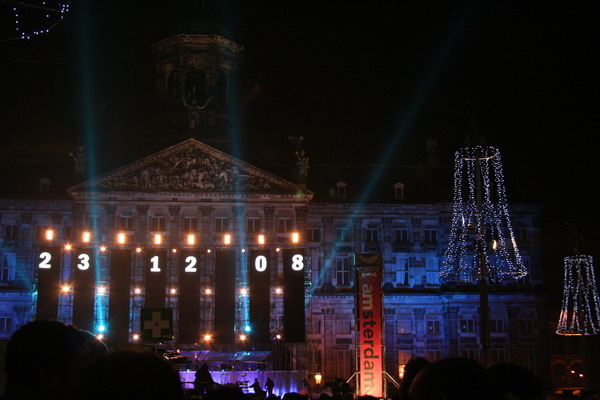
The crazy thing about the party is that the fireworks display wasn’t organized … it was individuals lighting their own pyrotechnic displays.
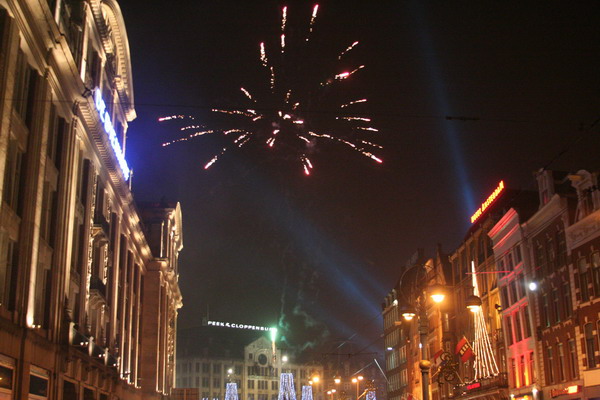
The live music was nice too.
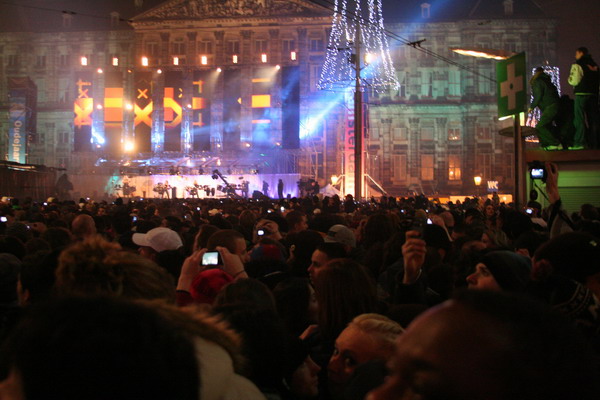
The countdown began…
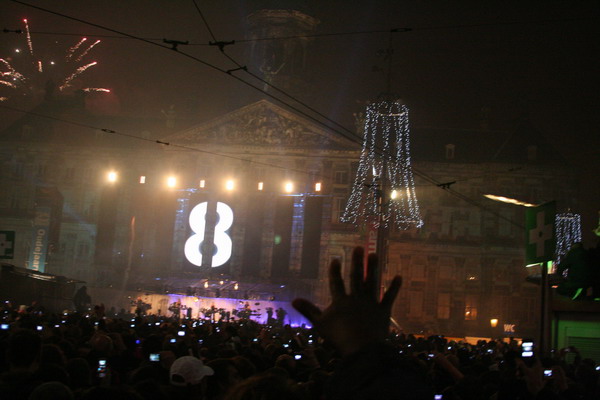
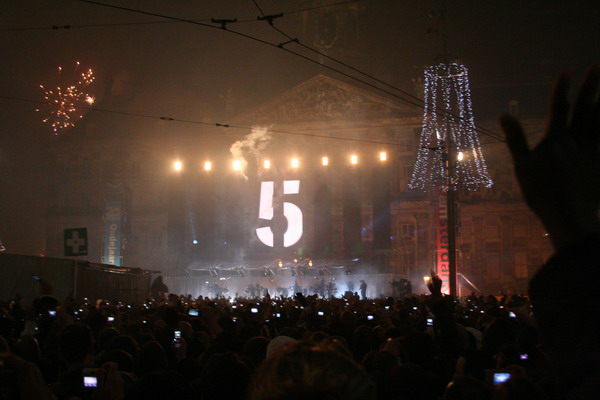
Happy 2008!!!
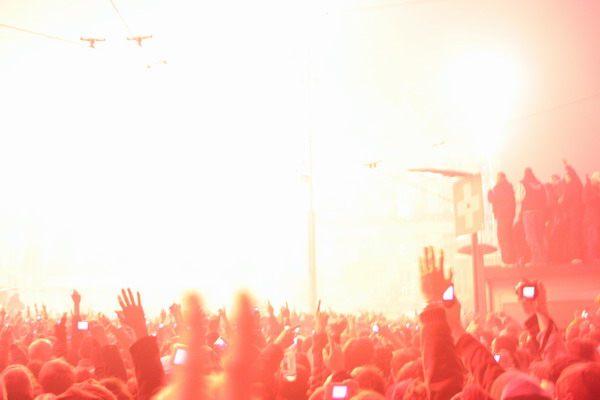
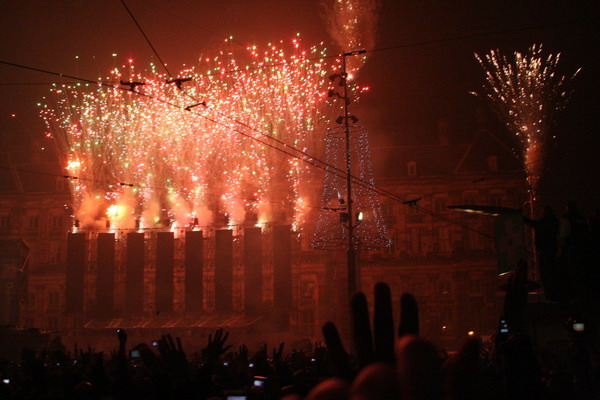
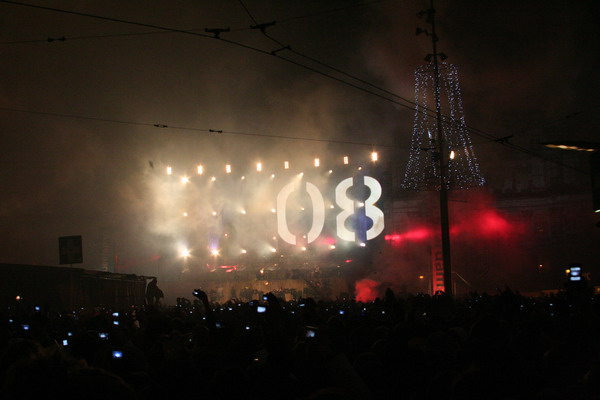
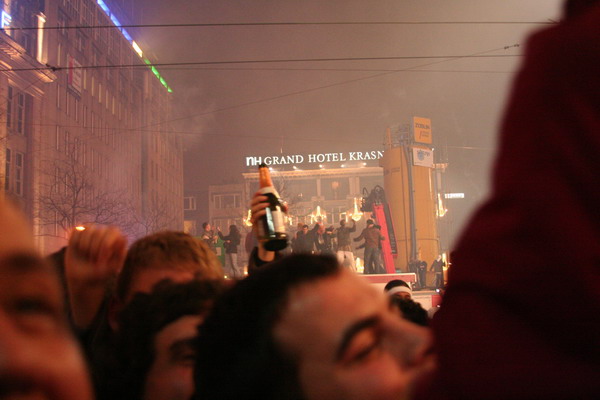
It seems that the digital camera has become the new lighter.
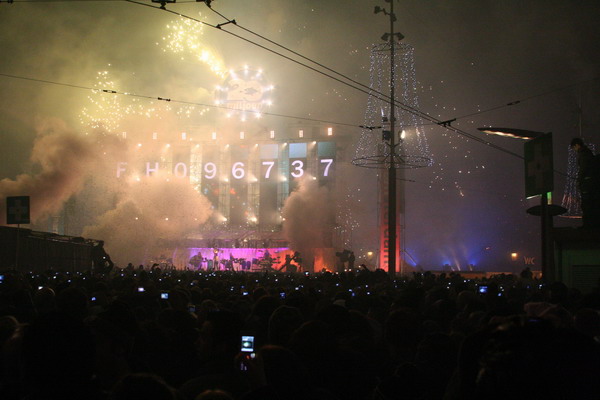
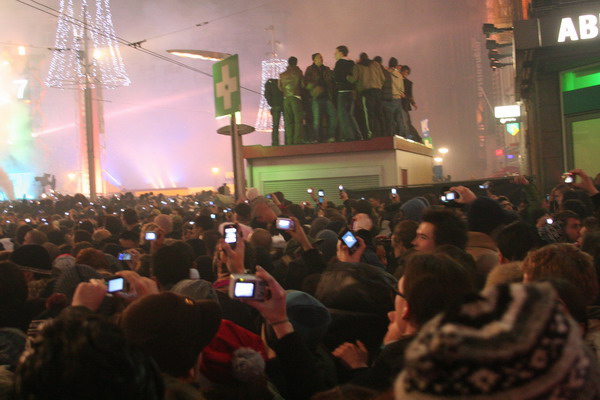
Anna and Julie trying to stay warm.
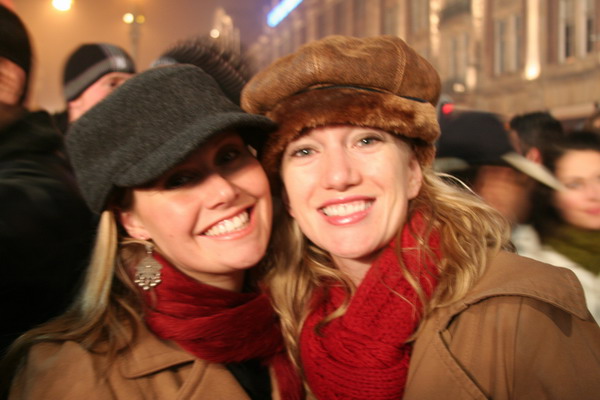
Julie and Michael.
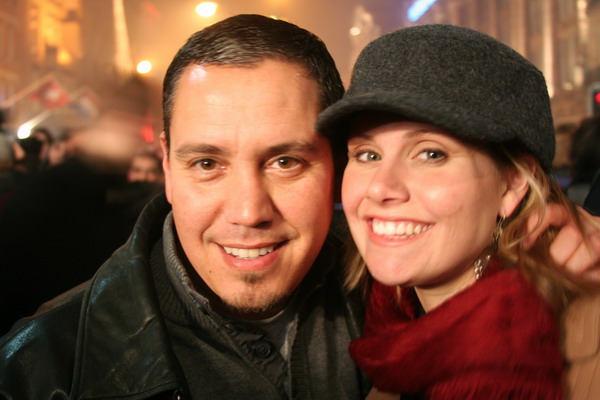
The streets were quite crowded.
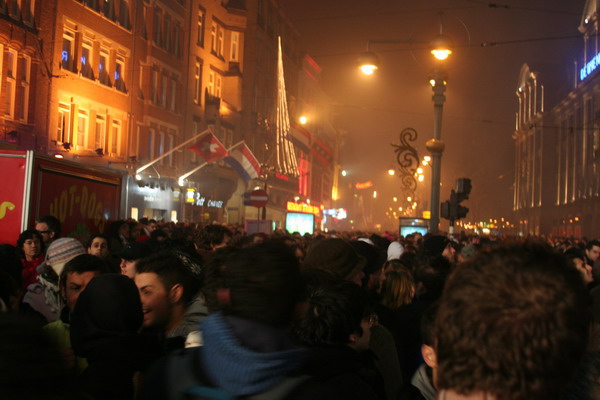
A couple of revelers.

This is how many fireworks were set off. Neither champagne nor fireworks seemed to be lacking that night.
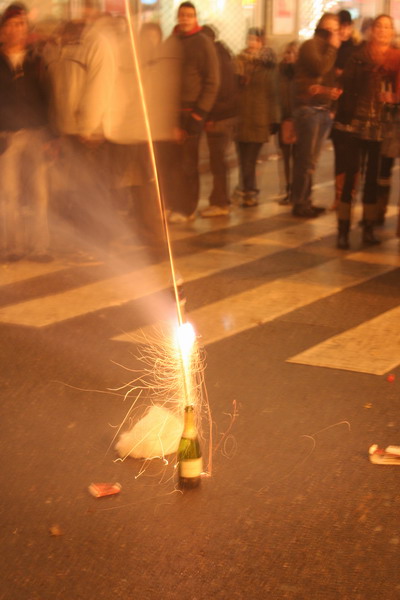
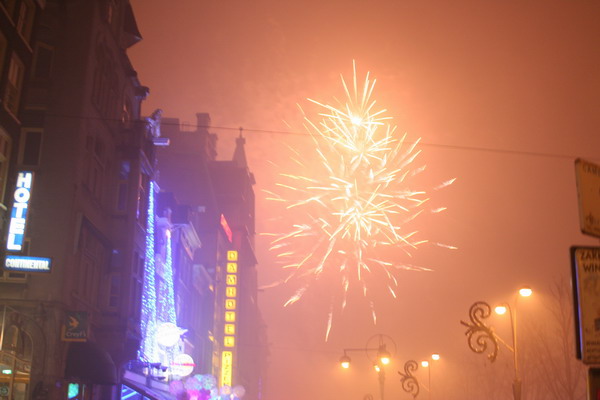
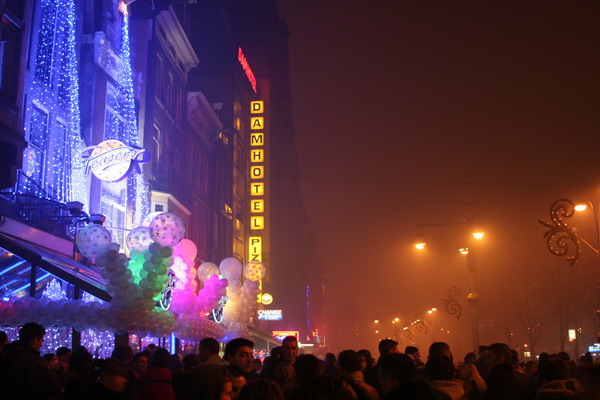
This is the only daytime image we have of the canals, but it was fun to wander around this laid-back city again.
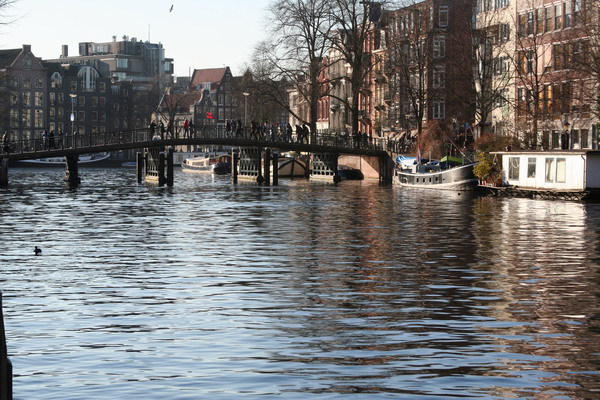
The next day we went up to Brussels. This is the Grand Place, one of the most picturesque squares in Europe (that we’ve seen thus far).
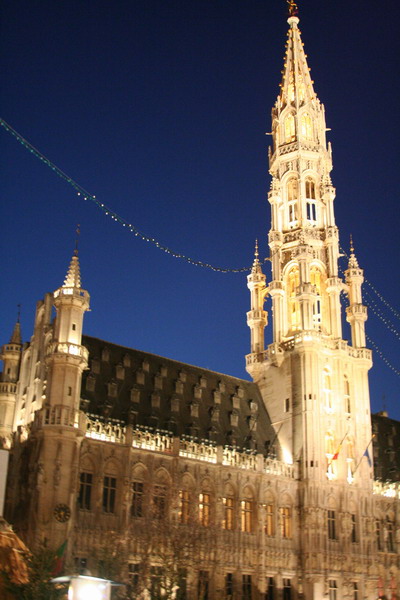
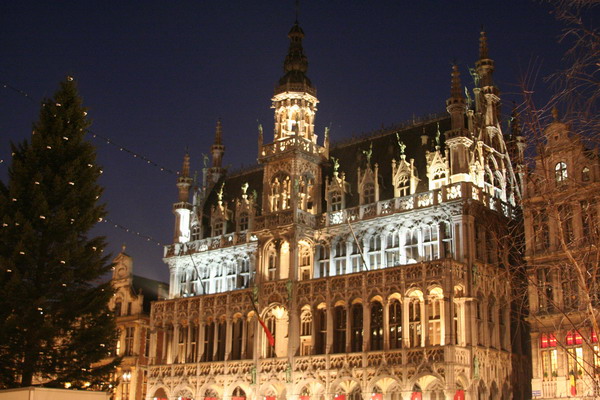
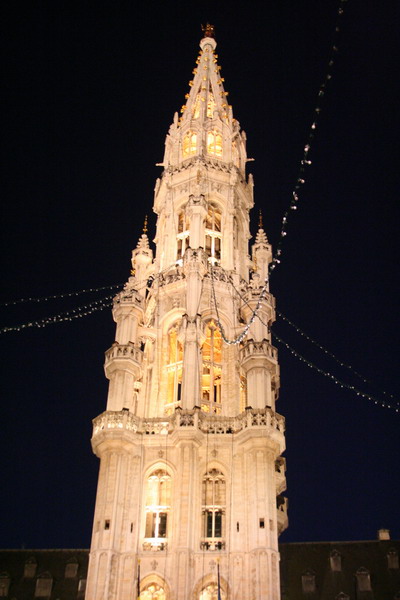
Here is Belgium’s understated national monument again, the Manneken Pis.
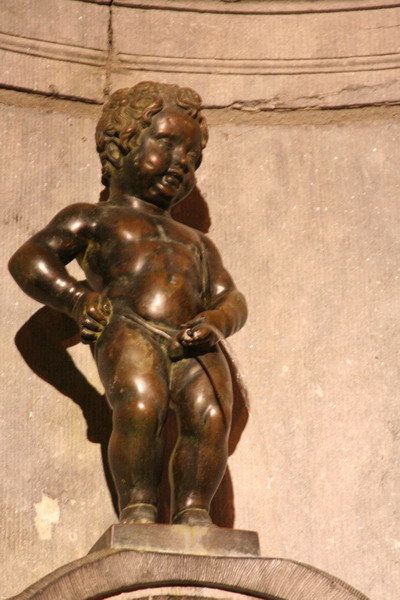
I think they may have enjoyed the waffles more than the 17th century statue that used to distribute fresh water.
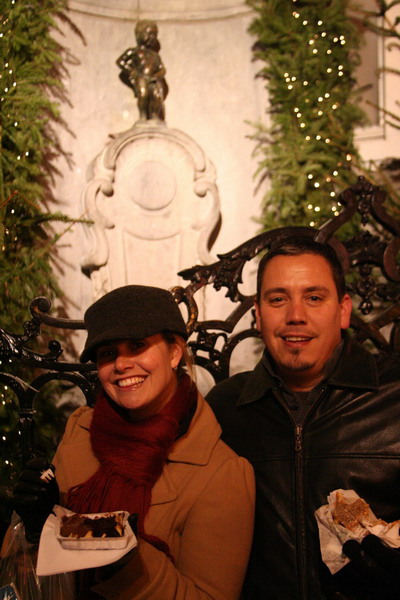
The last day of Julie and Michael’s visit, we showed them our favorite places in Luxembourg. One of the most poignant is of course the American Military Cemetery and Memorial that provides a final resting place for over 5,000 American servicemen from WWII.
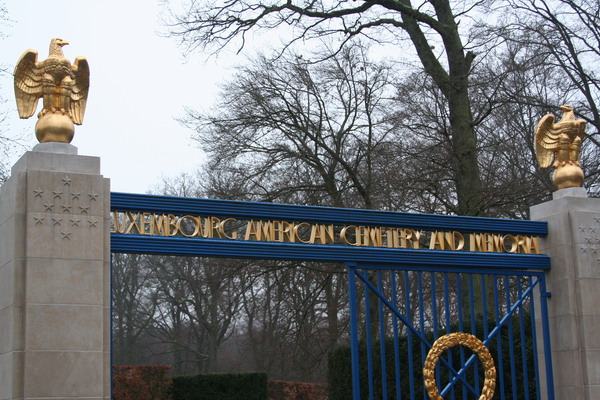
That concluded our time on this trip. It was great to spend so much quality time with Julie and our soon to be newest member of our family.
So, until the next adventure…
–Jim
Praha
Last week, my sister Julie and her fiance, Michael arrived from Los Angeles. After a weather delay in New York city for a day they arrived on Christmas day. The weather was perfect for Christmas. A heavy frost coated the countryside in white. So, our afternoon walk was quite spectacular. Unfortunately, my camera didn’t accompany us, so I don’t have any images to share.
The next morning, I had to go back to work, but Julie and Michael borrowed our car and went to visit friends in Paris. When they returned, they agreed that Paris is an amazing city.
Next stop was to the Czech Republic’s capital city of Praha (also known as Prague). Although communism took hold of the country in 1948 and held on until the Berlin Wall fell in November 1989. Now, capitalism has firmly returned and the country (and Prague specifically) has become rather expensive. Nonetheless, the architecture is something to admire and the fact that the city was relatively untouched during WWII makes the city center remarkable.
We began our tour at the Prague Castle, or Prasky hrad. This is the most popular tourist attraction in the city. Also, according to the Guinness Book of World Records it is the largest ancient castle in the world. With a length of 570 meters and a width of about 128 meters, it is almost a city unto itself.
Here are a few images of the stoic guards at the entrance.
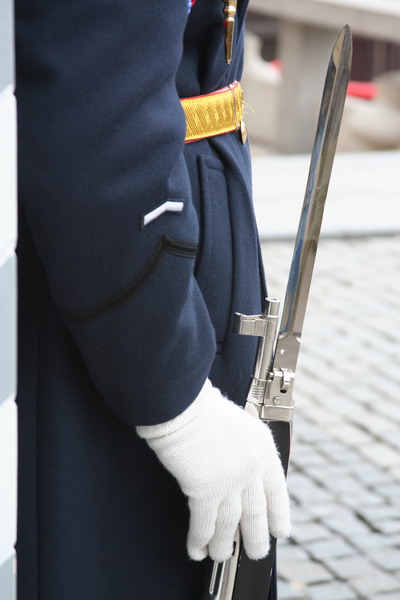
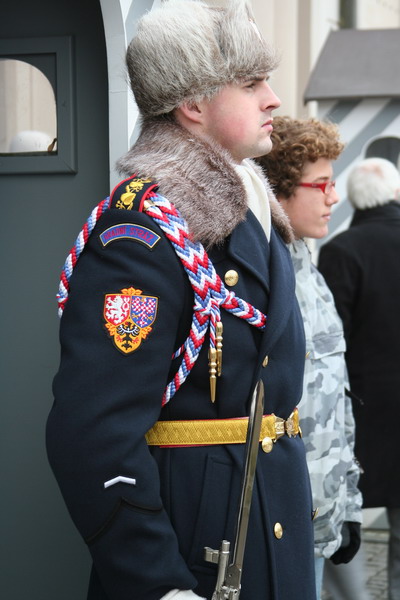
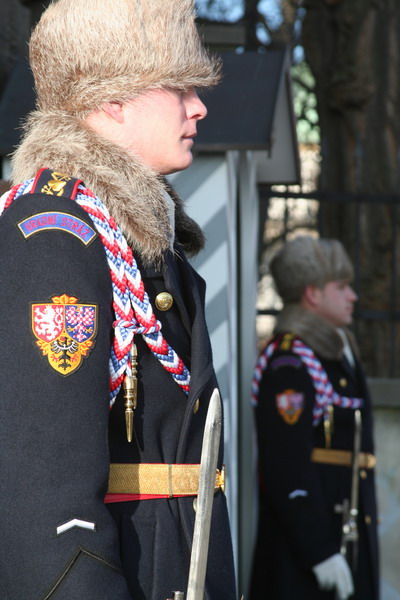
This is St Vitus cathedral. It looks very Gothic and was begun in 1344, but wasn’t completed until 1953, with the very modern touch of the artists carving sculptures of themselves over the triple doorway.
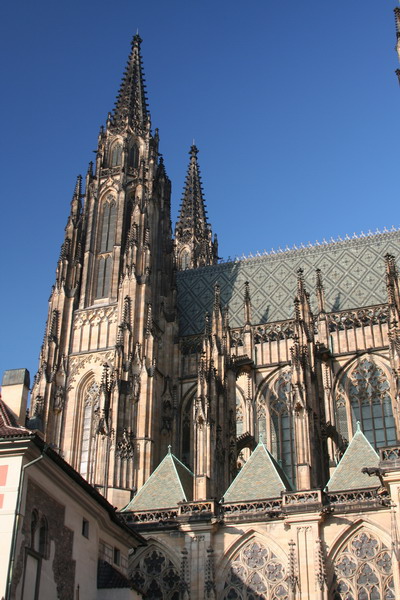
Among the many reliquaries housed in the cathedral is the tomb of St Wenceslas. He was the Duke of Bohemia in the 10th century, but is perhaps best known as the subject of the Christmas carol, Good King Wenceslas. Interestingly, the lyrics make no mention of Christmas, only the very Christian virtue of aiding the less fortunate and a saint’s feast on Dec 26th.
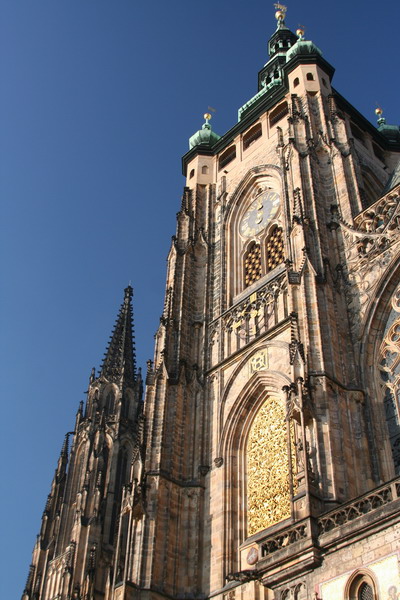
There were also blacksmiths outside the castle practicing their art. Julie and Michael picked up a very nice piece for their home.
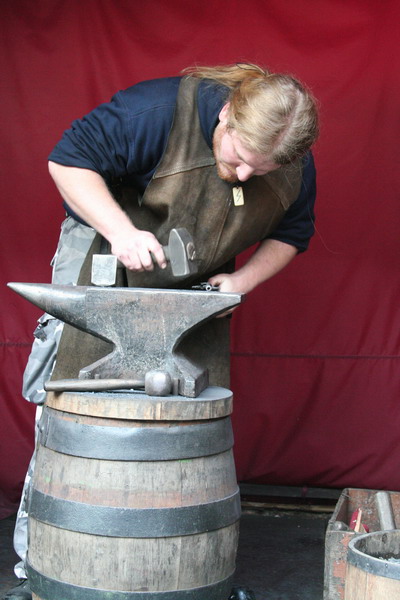
The castle also afforded great views of the city.
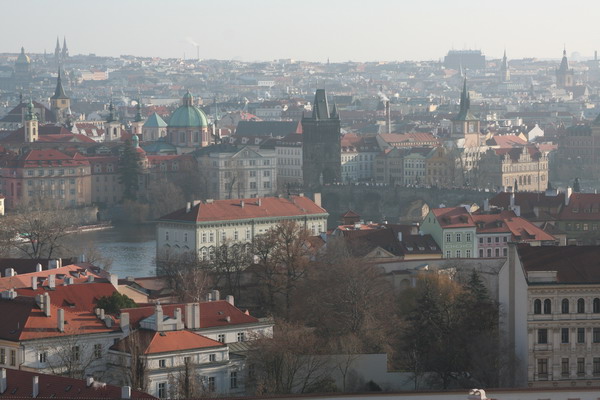
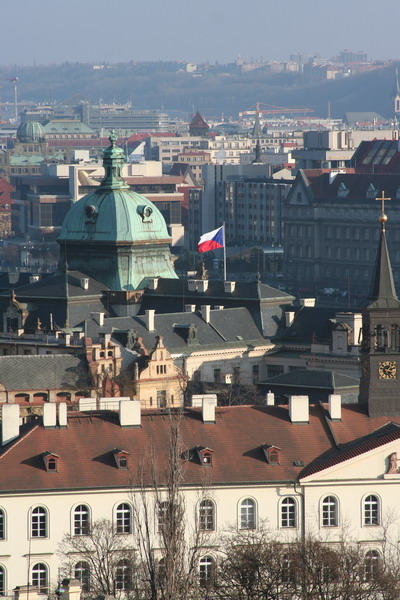
Then, we wandered down to the Vlatava River.
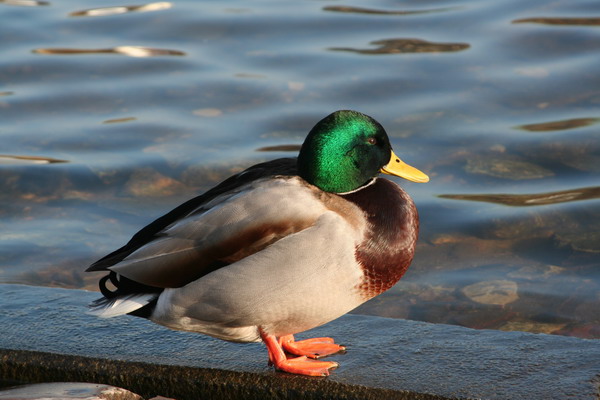
This is the 500 meter long Charles Bridge. It was completed around 1400 and withstood the constant strain of wheeled traffic for 600 years when it was made pedestrian after WWII.
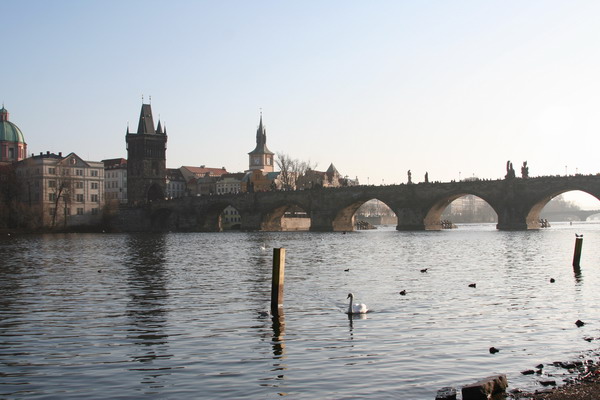
These are a few views from the bridge.
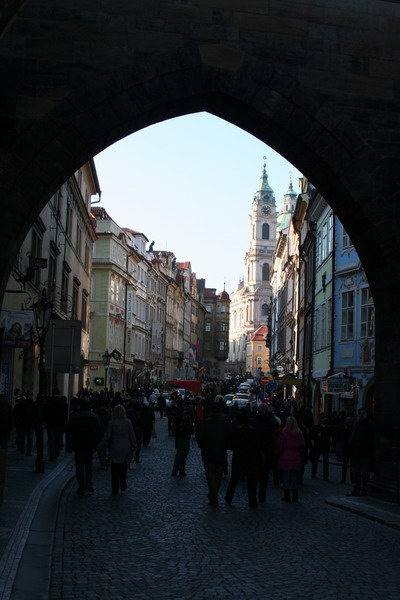
You can see the crush of people can be a bit much, and this wasn’t even the summer tourist season!
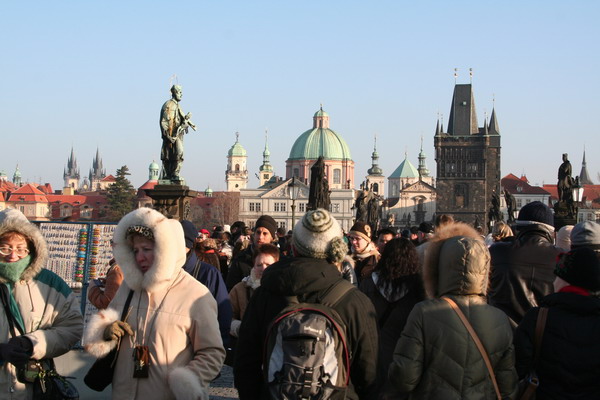
This perspective offers a nice view of the castle.
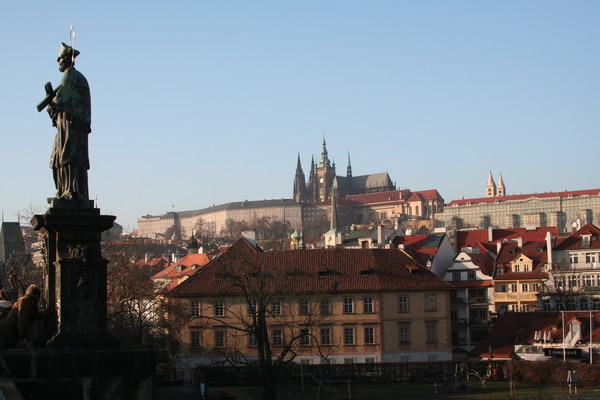
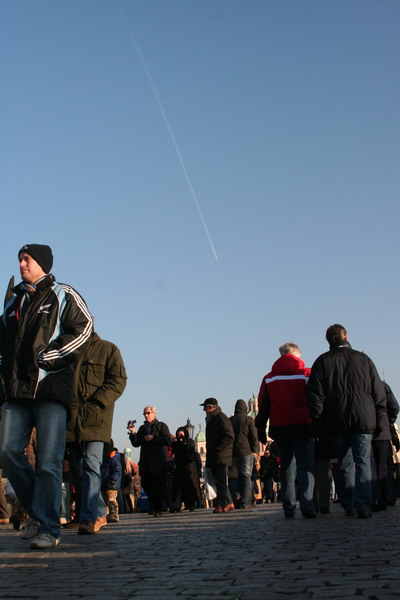
A clock tower in the Old Tower Square.
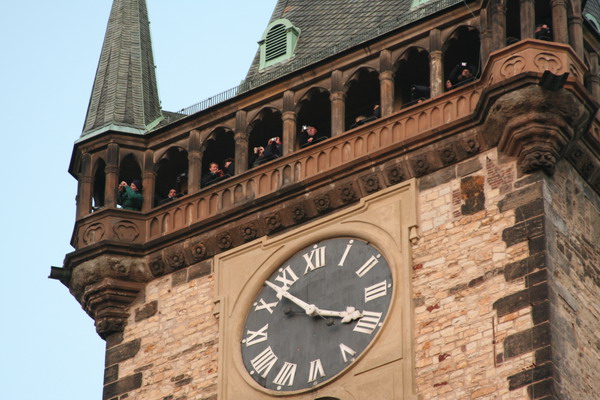
This is the astronomical clock. It dates from the 15th century and drew quite a crowd to watch the hourly parade of the 12 apostles.
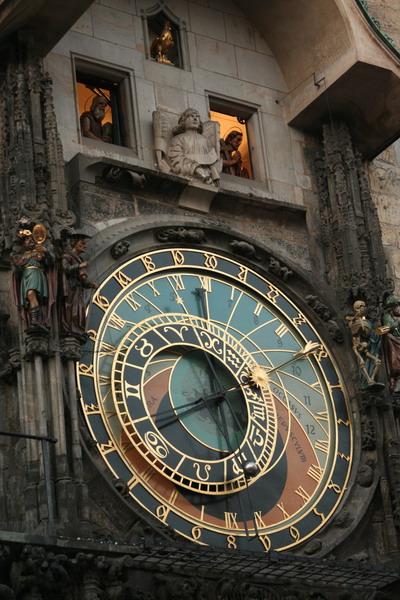
These tasty rolls were sold at several places in the main square, which was teeming with the commercialism of a Holiday Market.
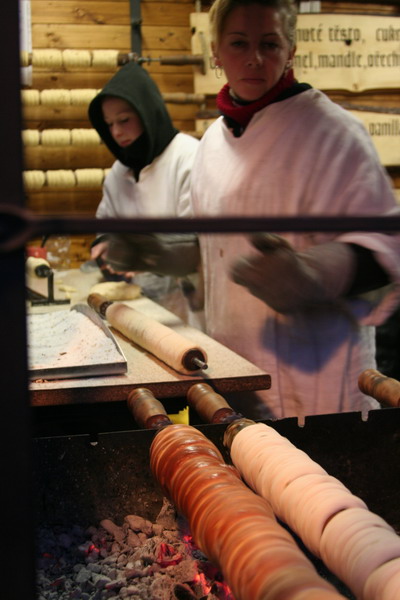
These are a few images from the market in the Old Town square. Although this particular market is relatively new, the square has been the center of Prague’s commerce since the 10th century.

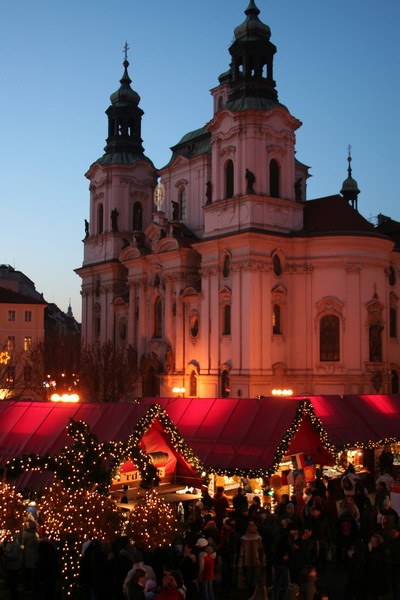
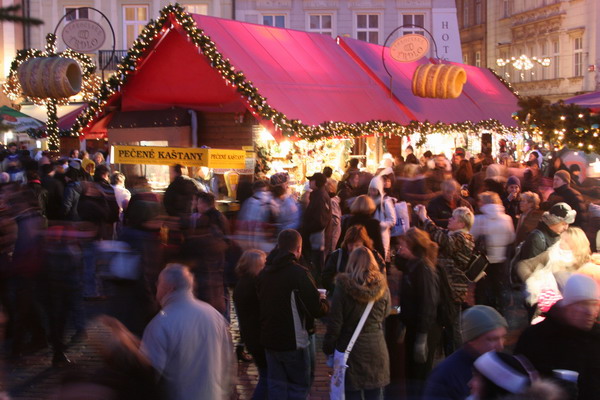

This is the distinctive Gothic Church of Our Lady Before Tyn.
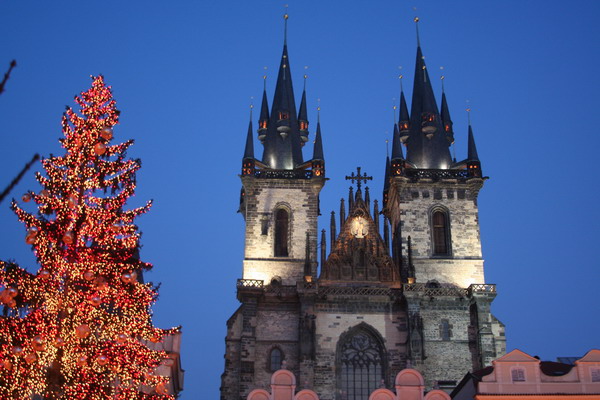
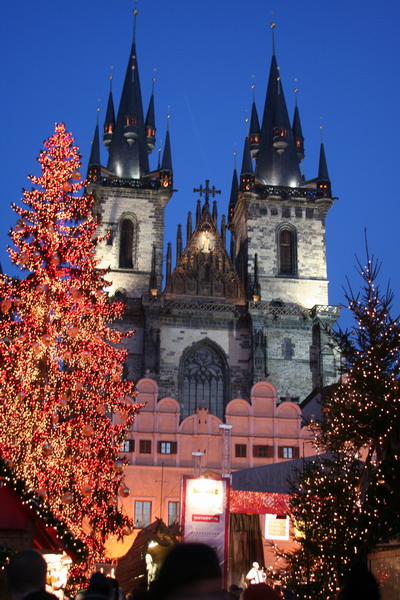
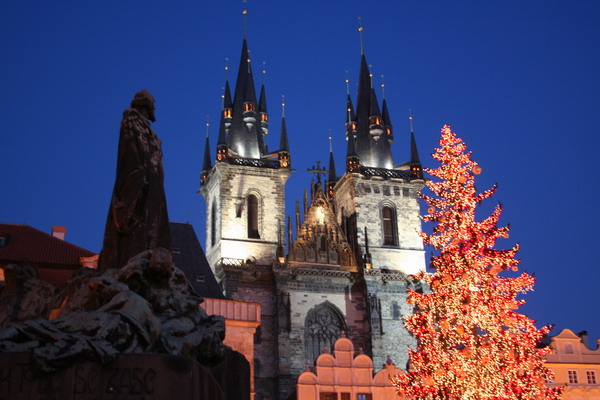
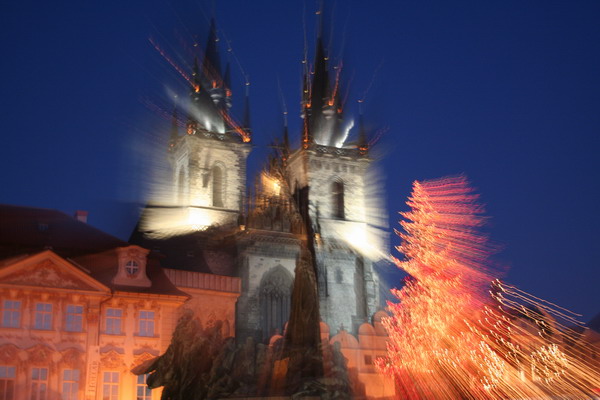
Tasty ham being served rotisserie style.
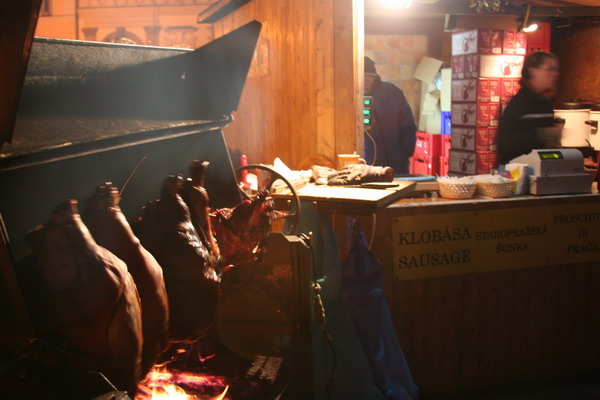
The music was very enjoyable.
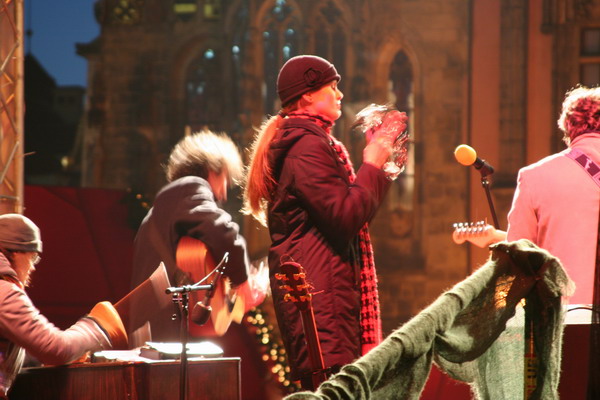
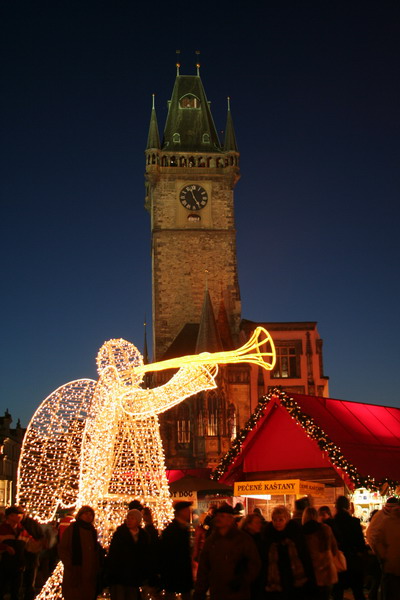
Julie and Anna as the subway train passed.
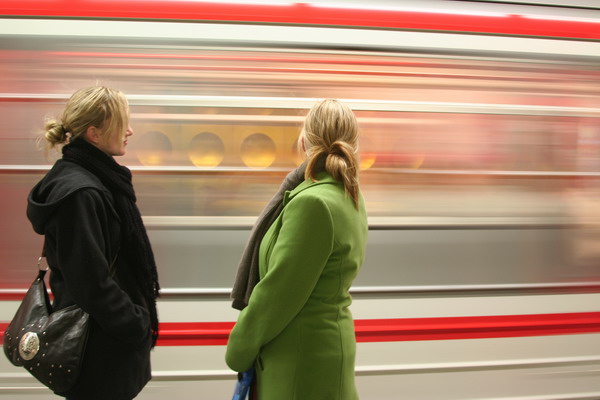
The weekend went by very quickly, and was quite nice. However, we left with the feeling that commercialism has strongly taken root again (to its credit) and left the city VERY expensive for visitors and locals alike.
Next stop was Amsterdam for a huge New Year’s celebration. Until then…
–Jim
